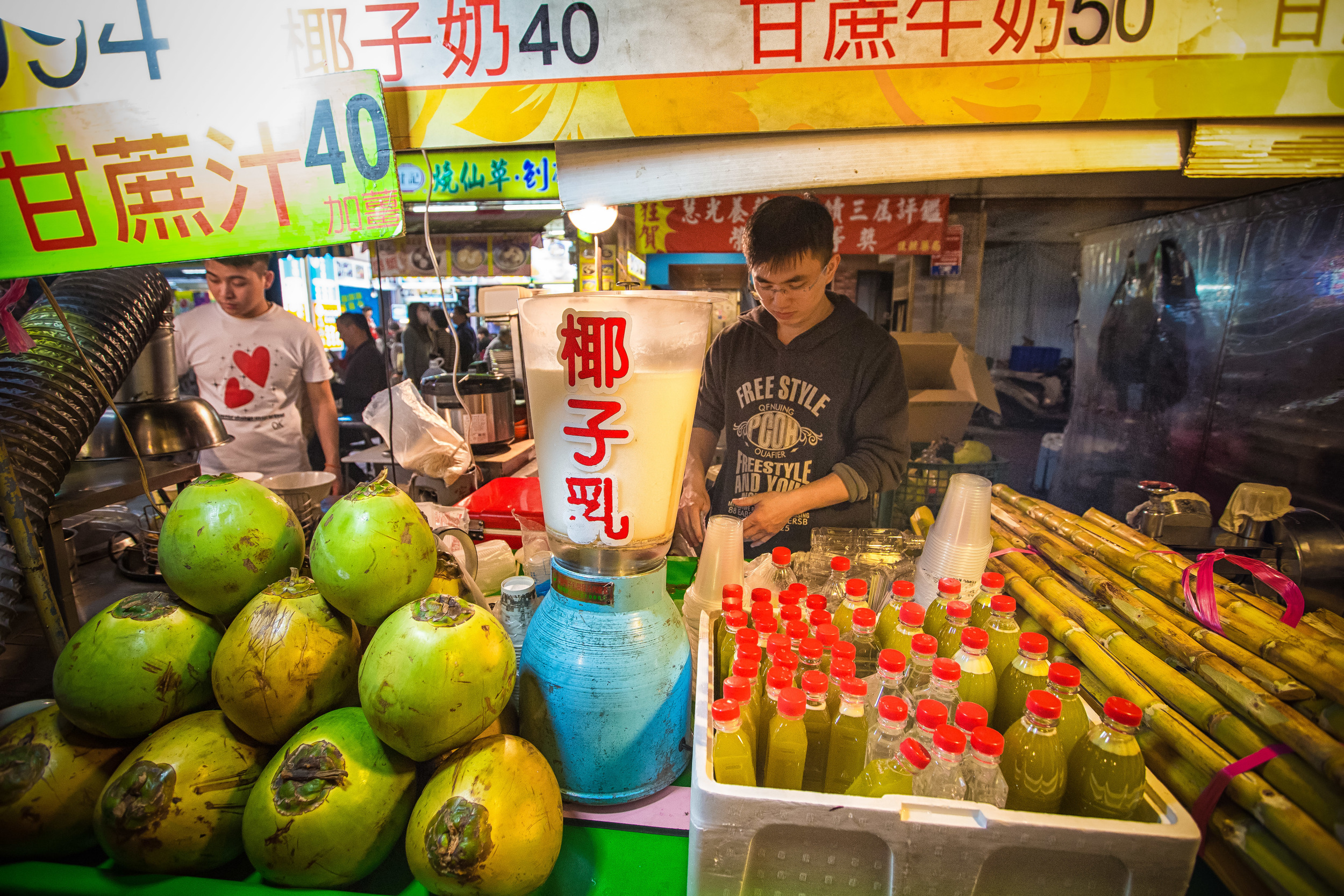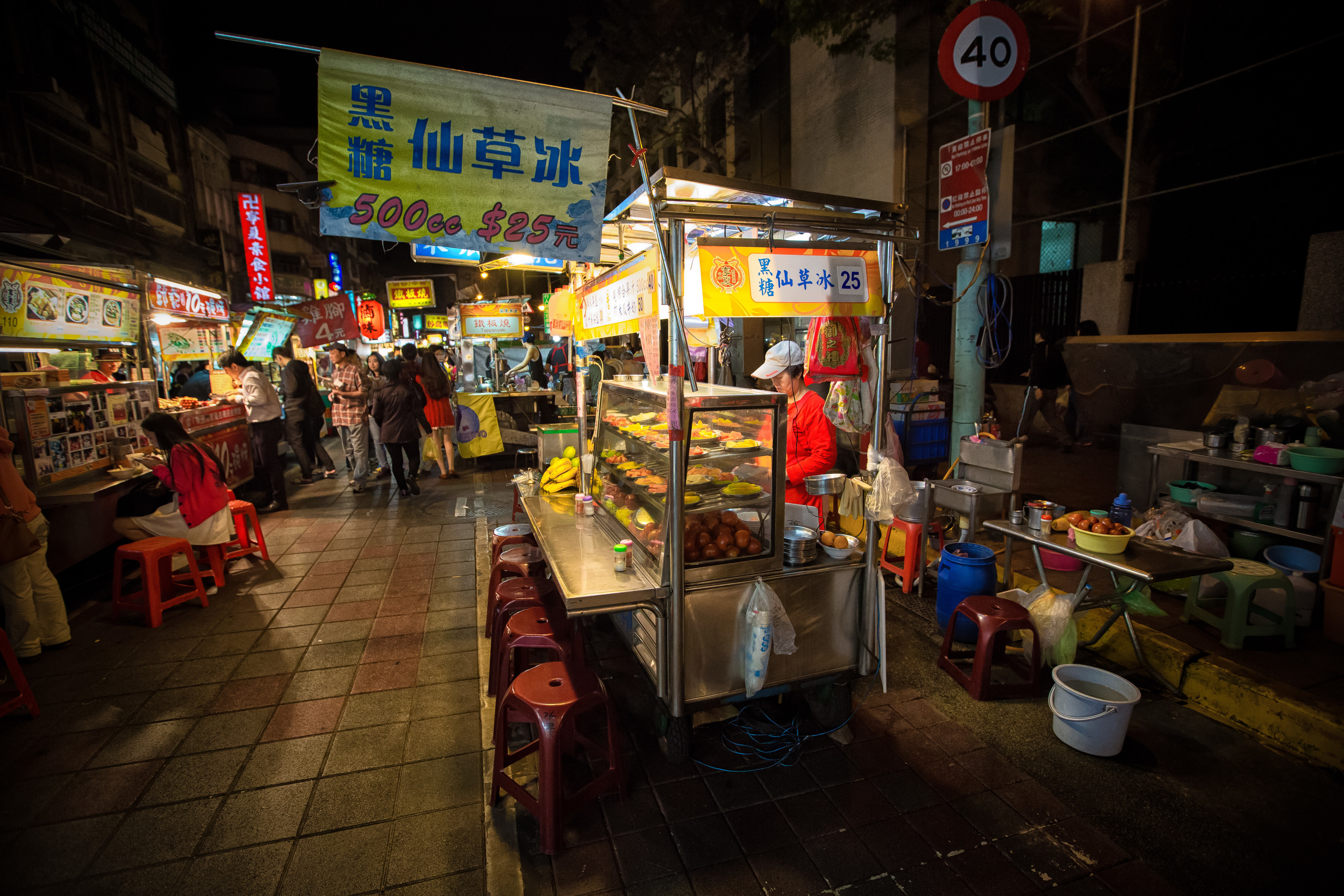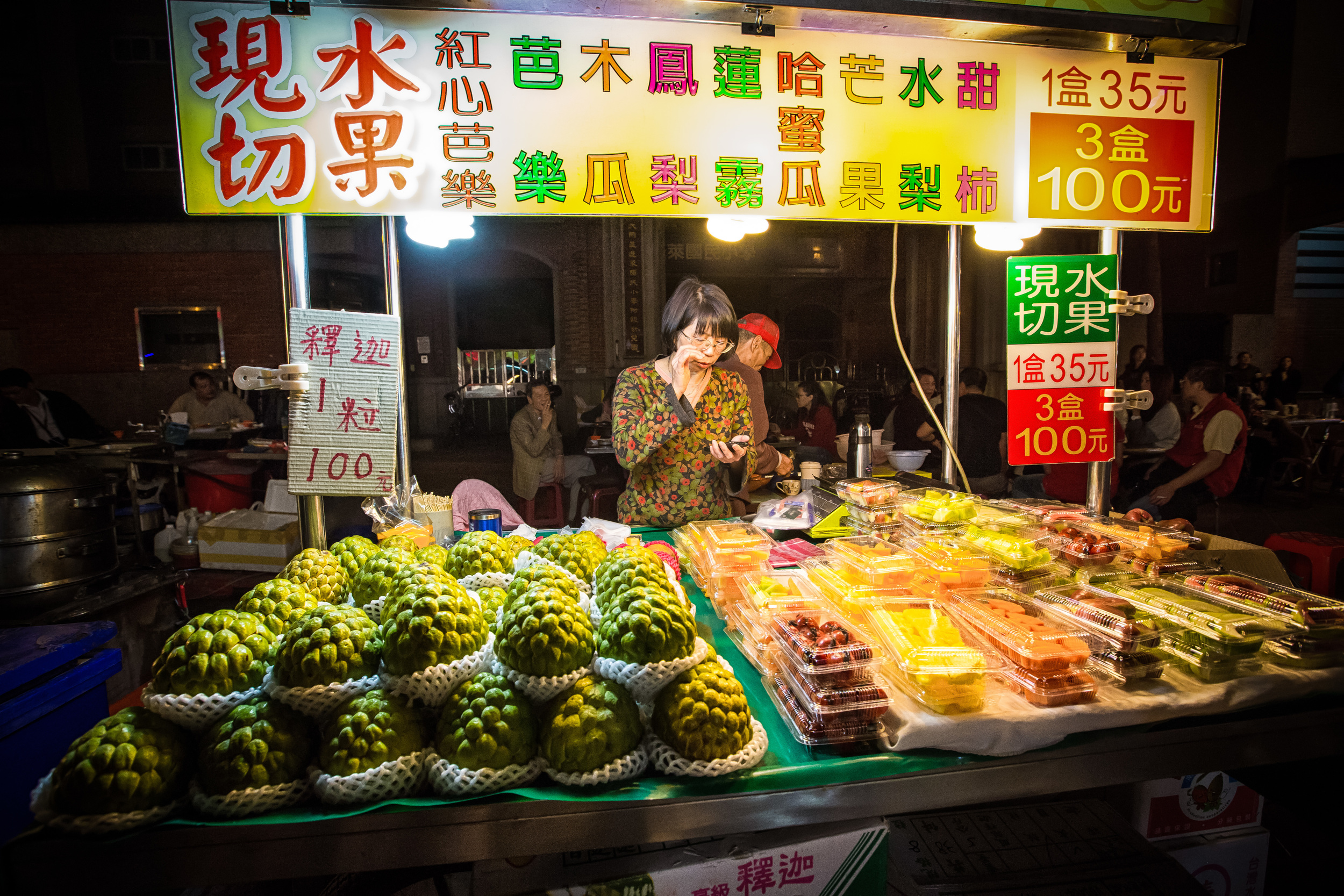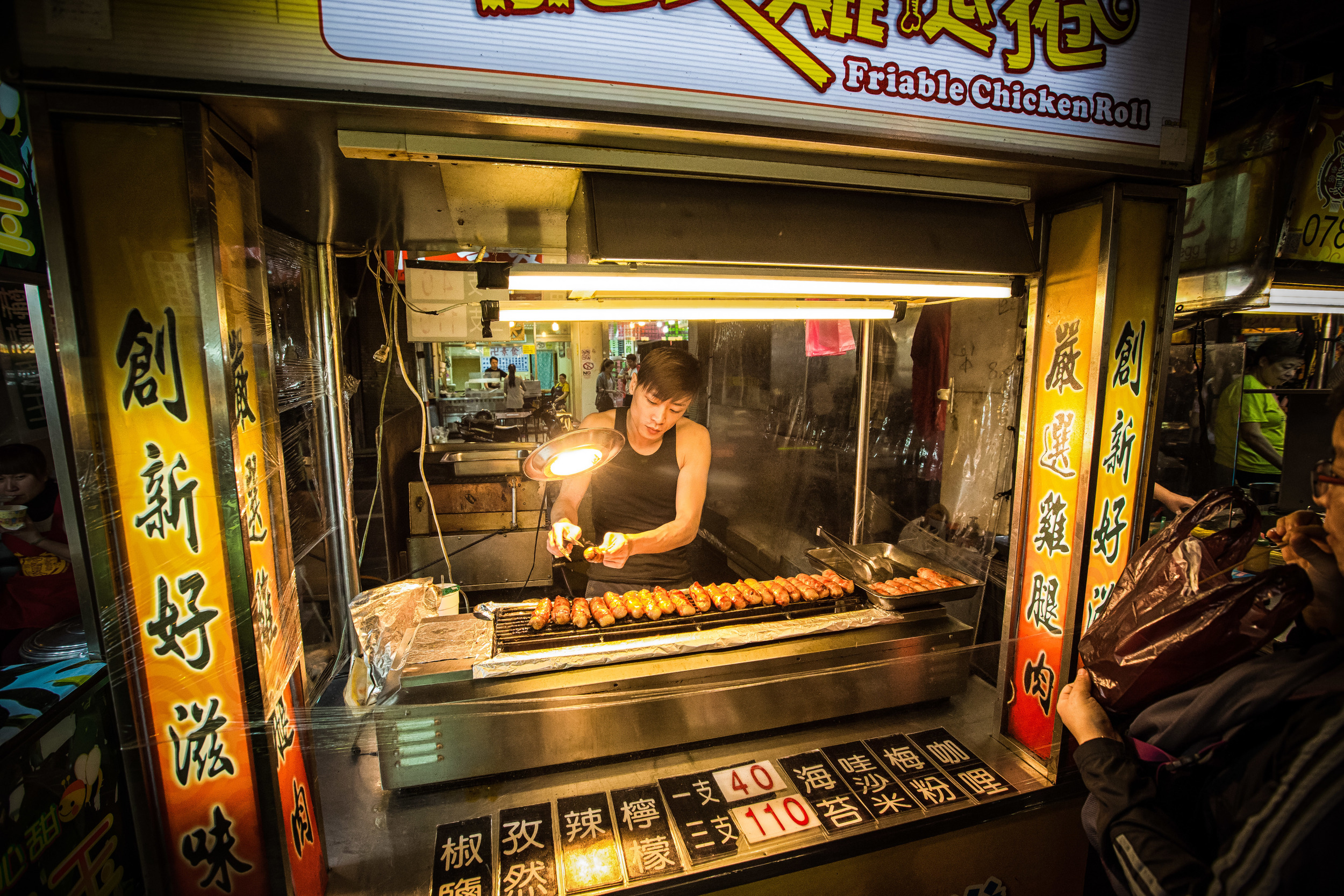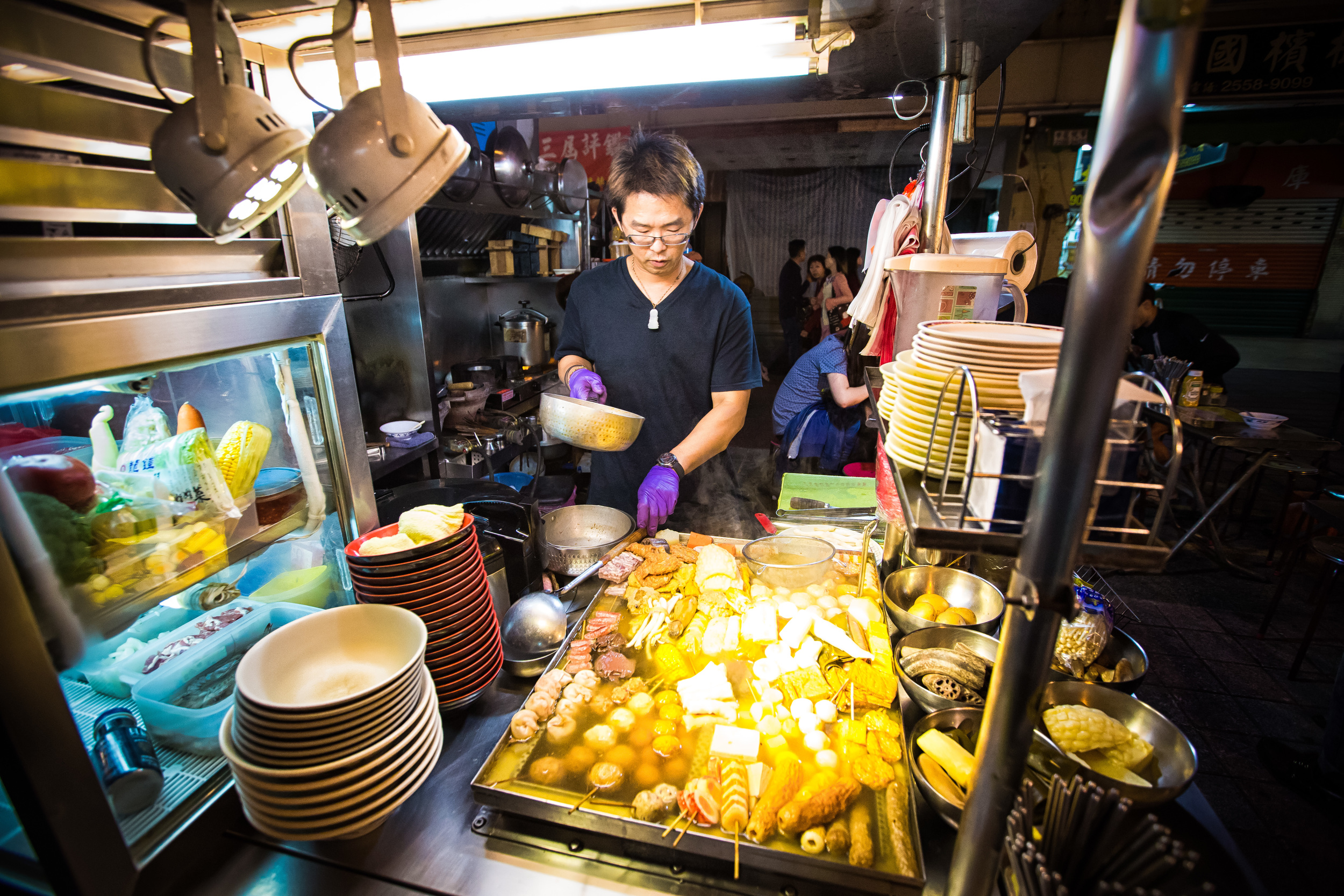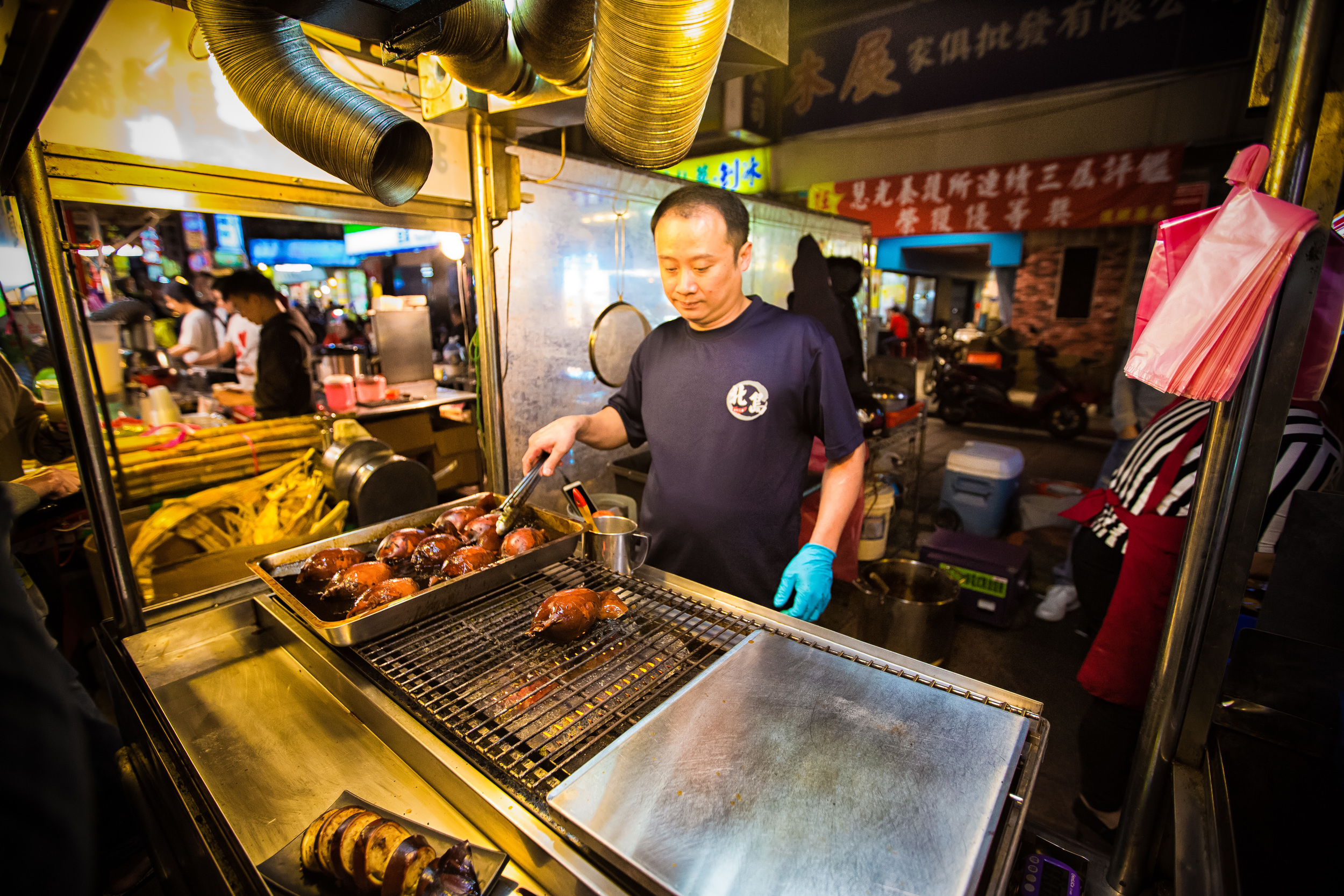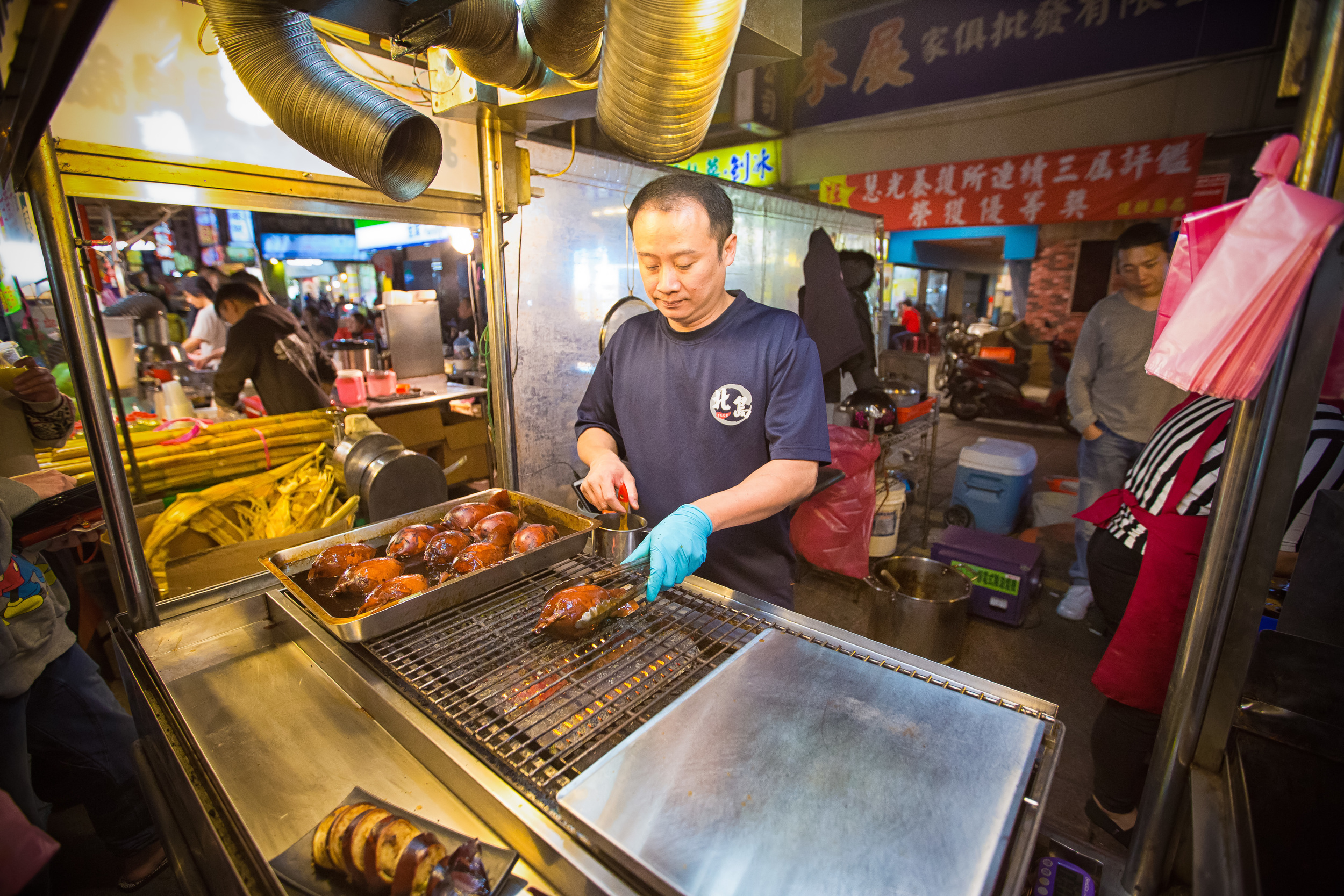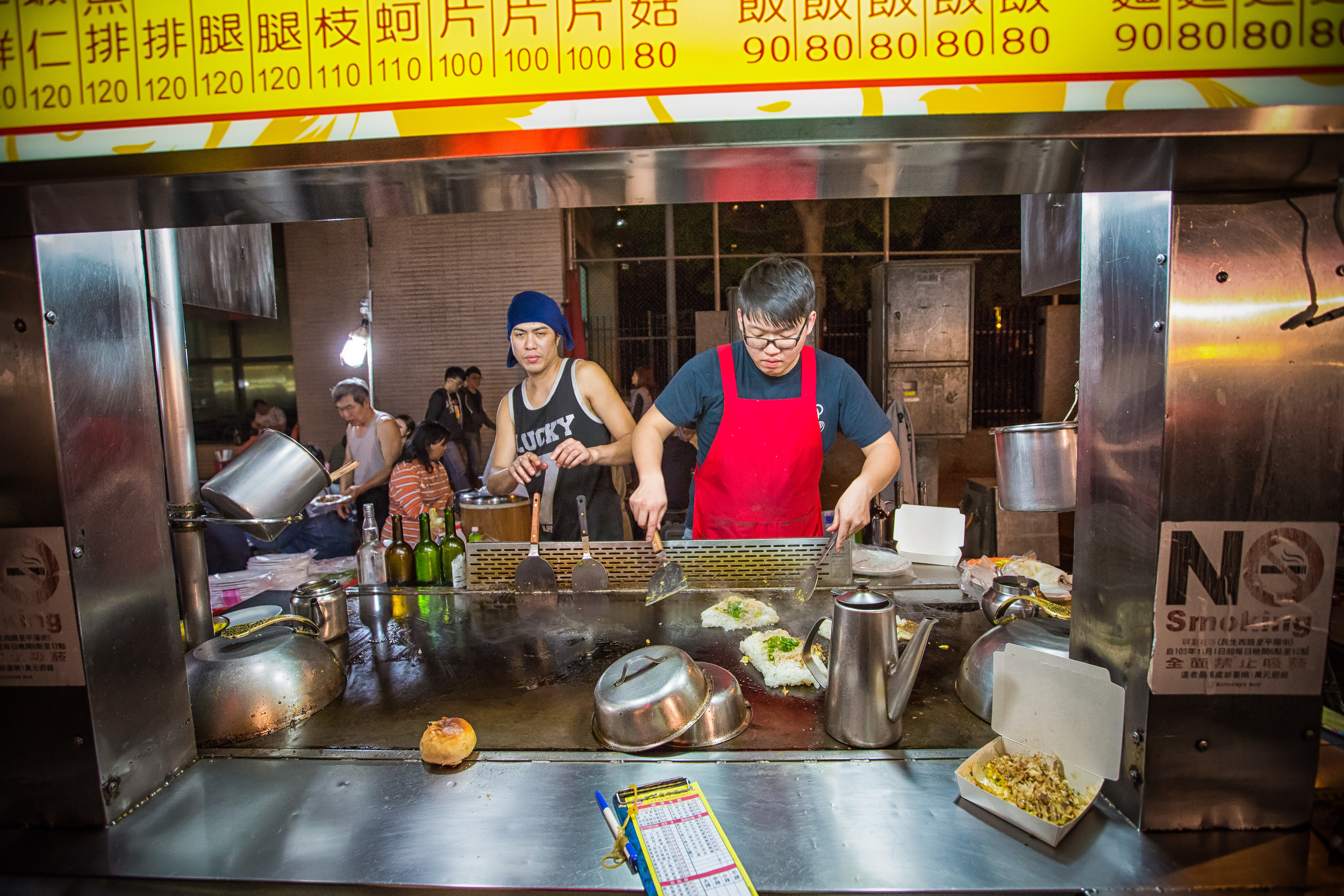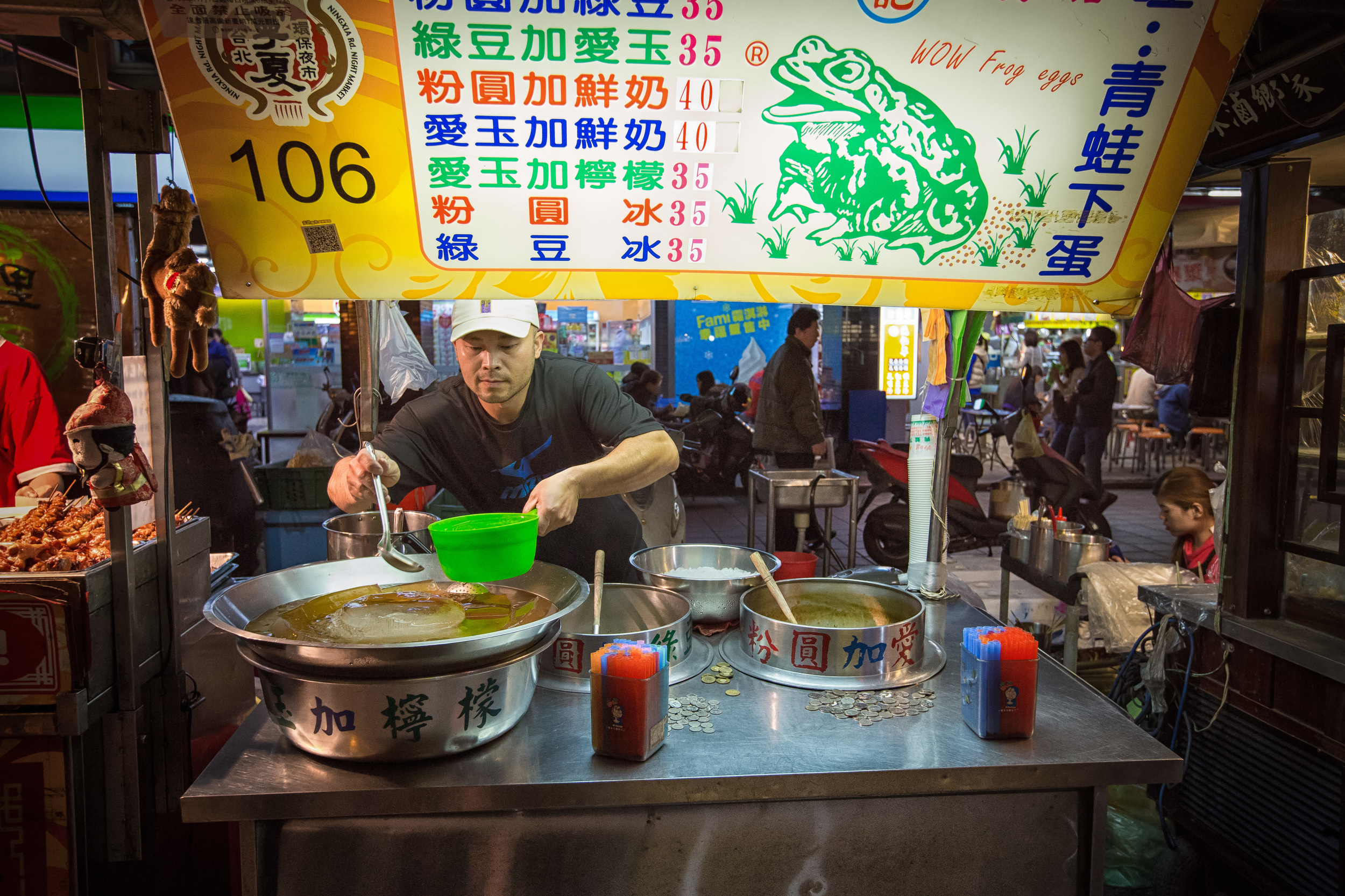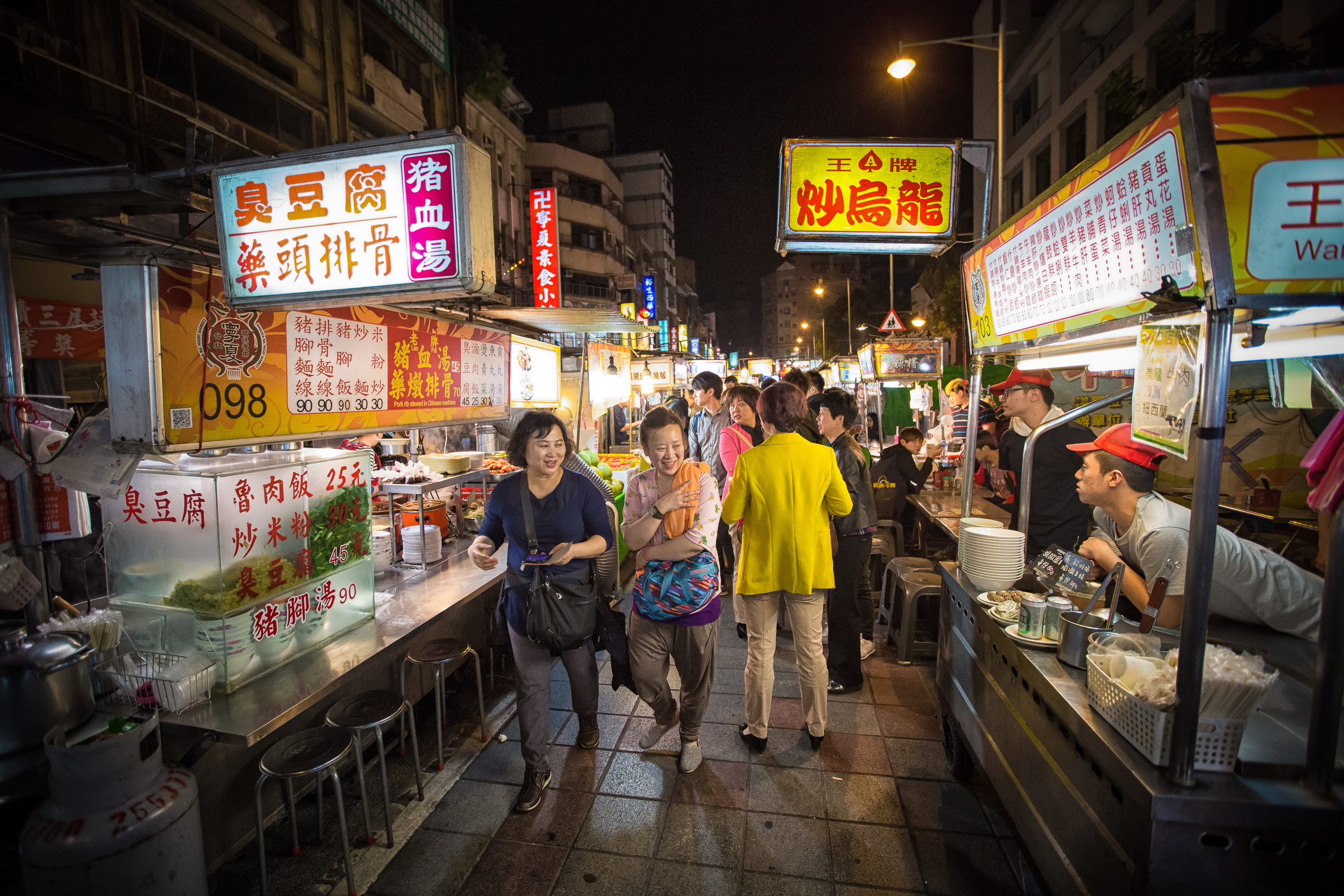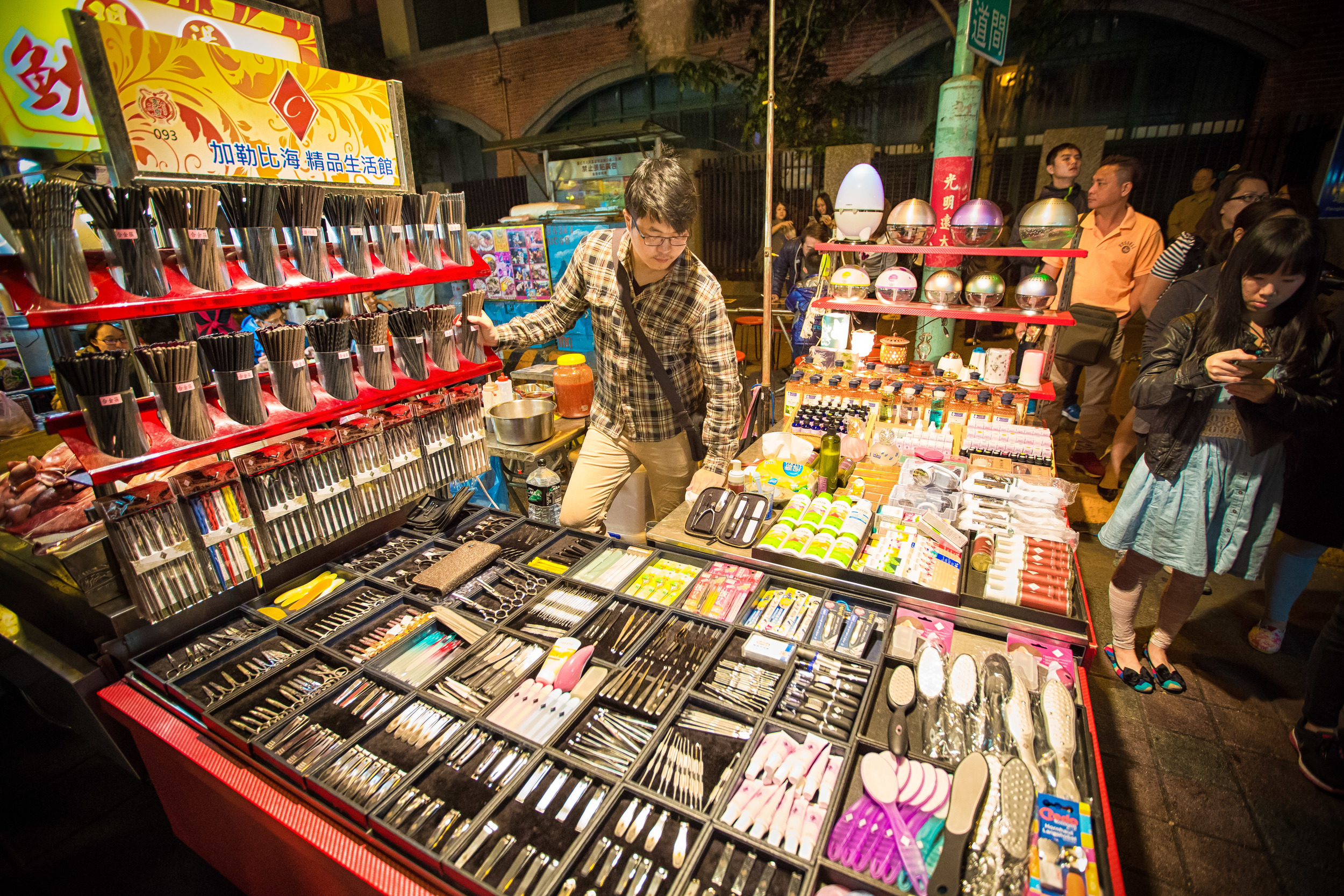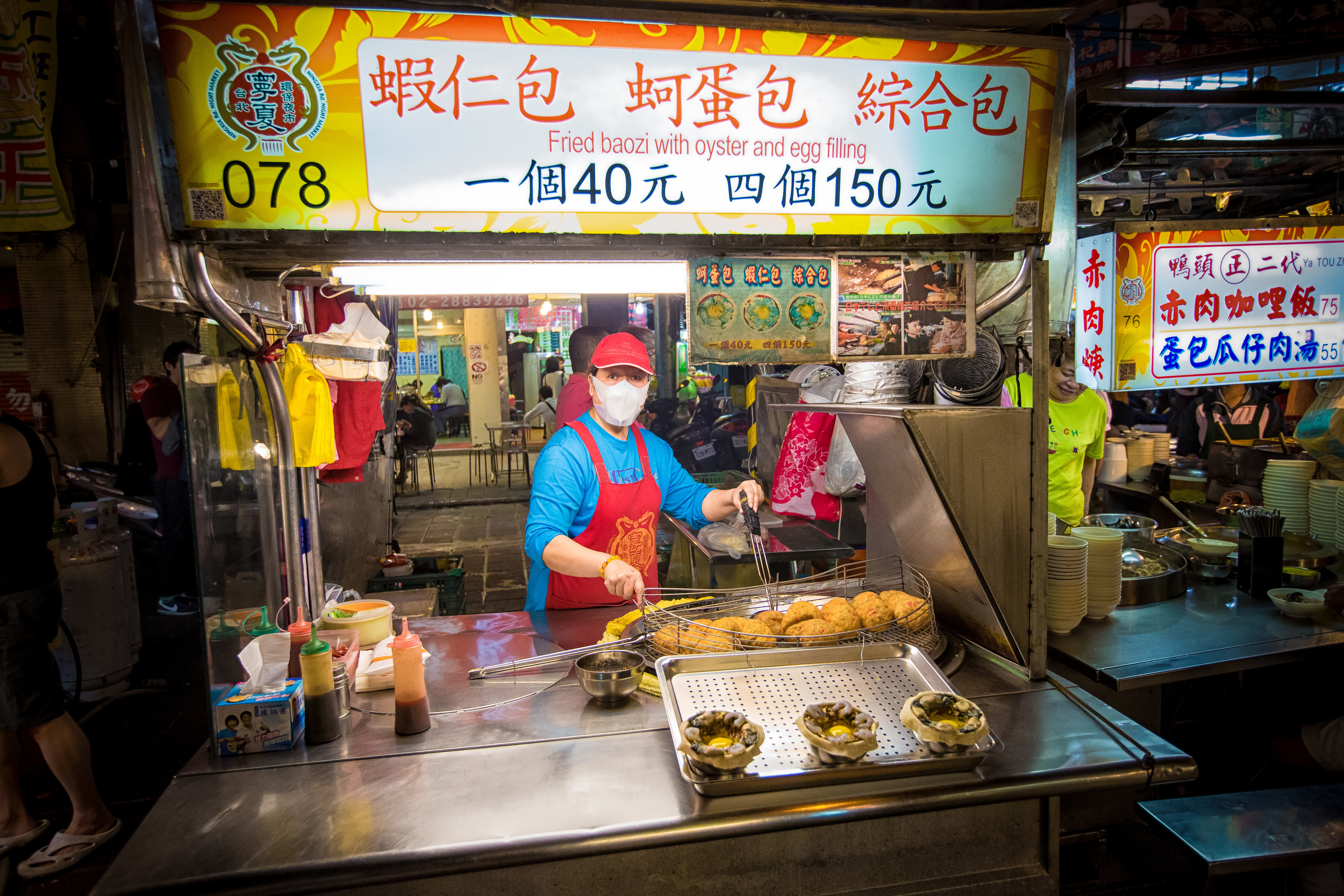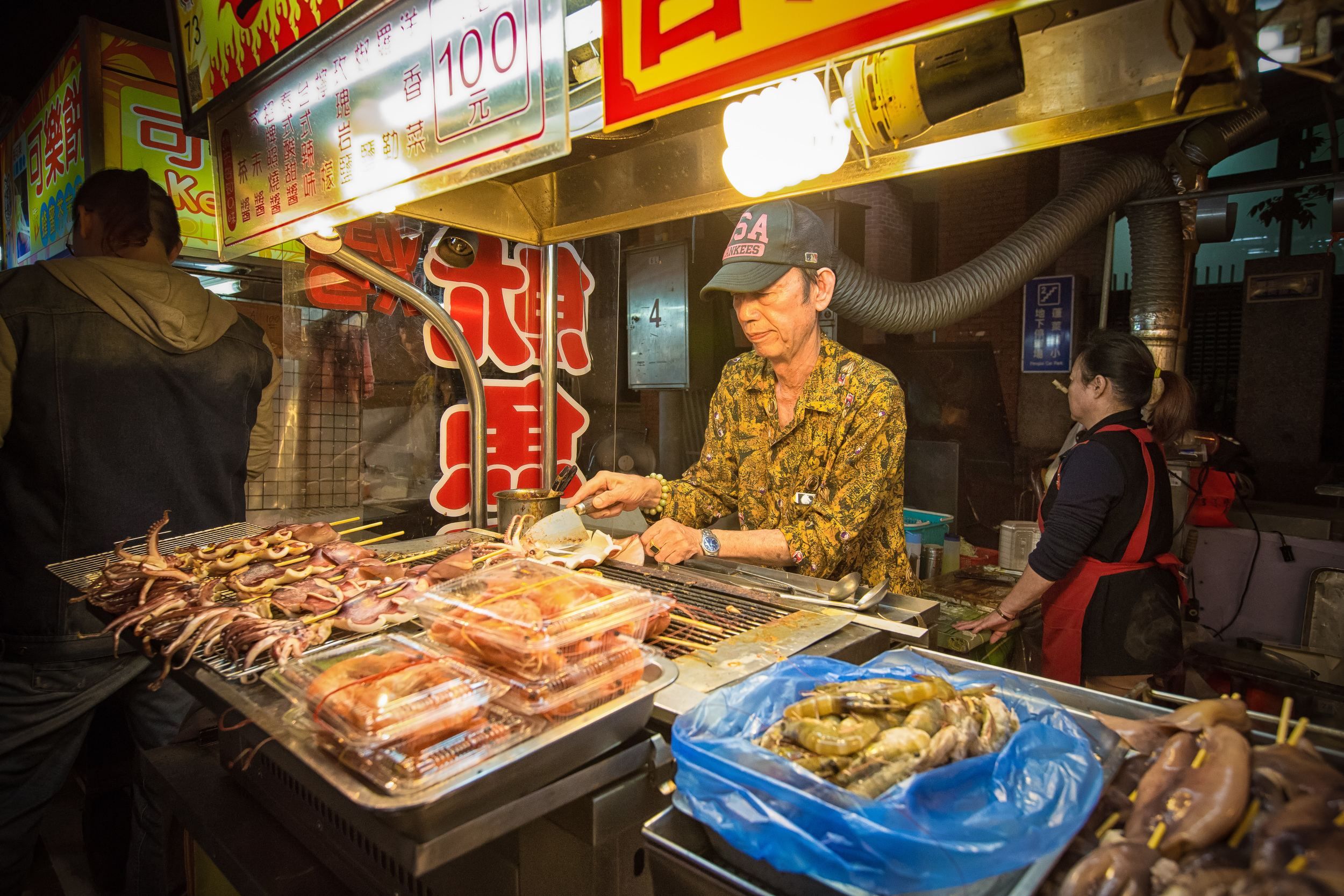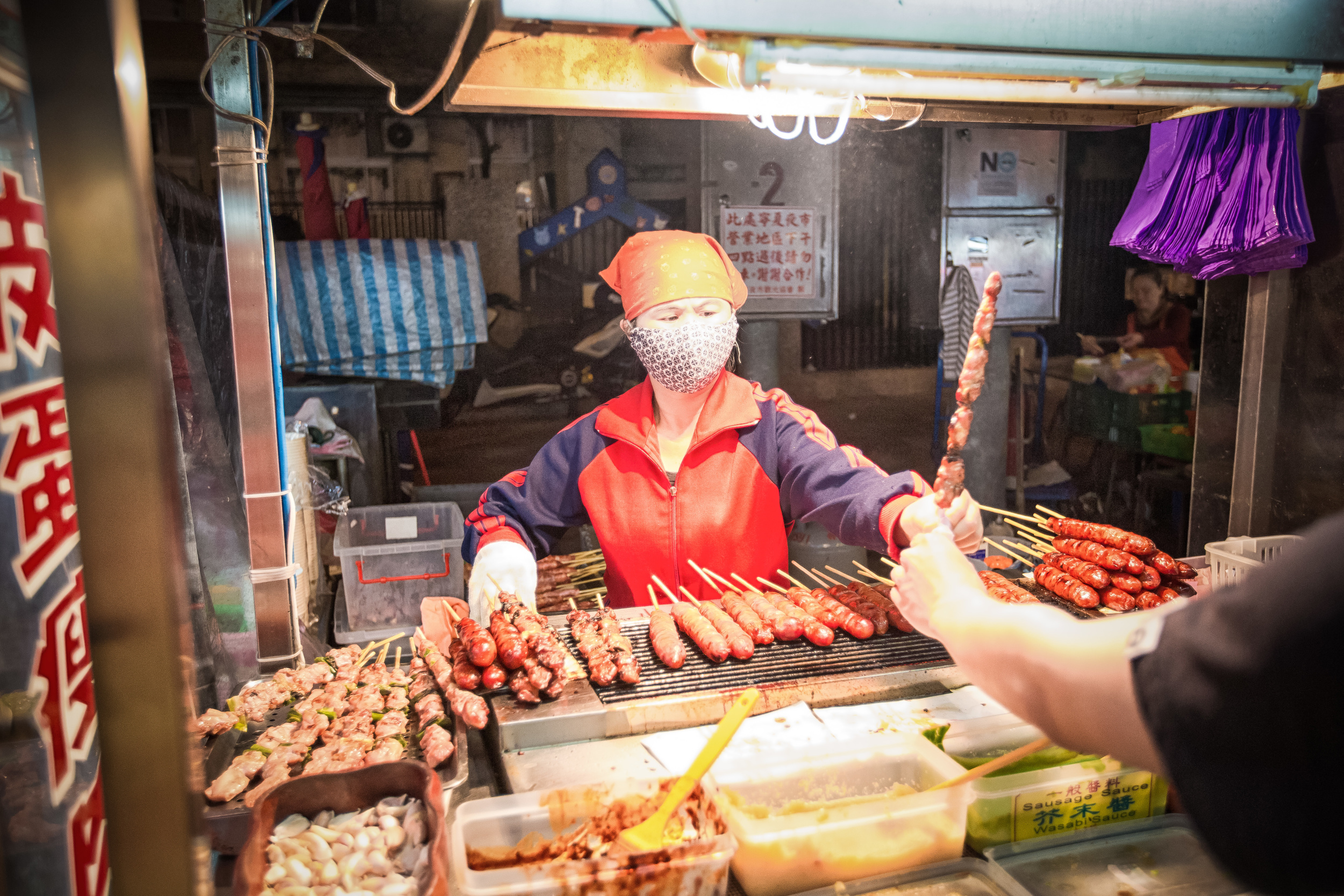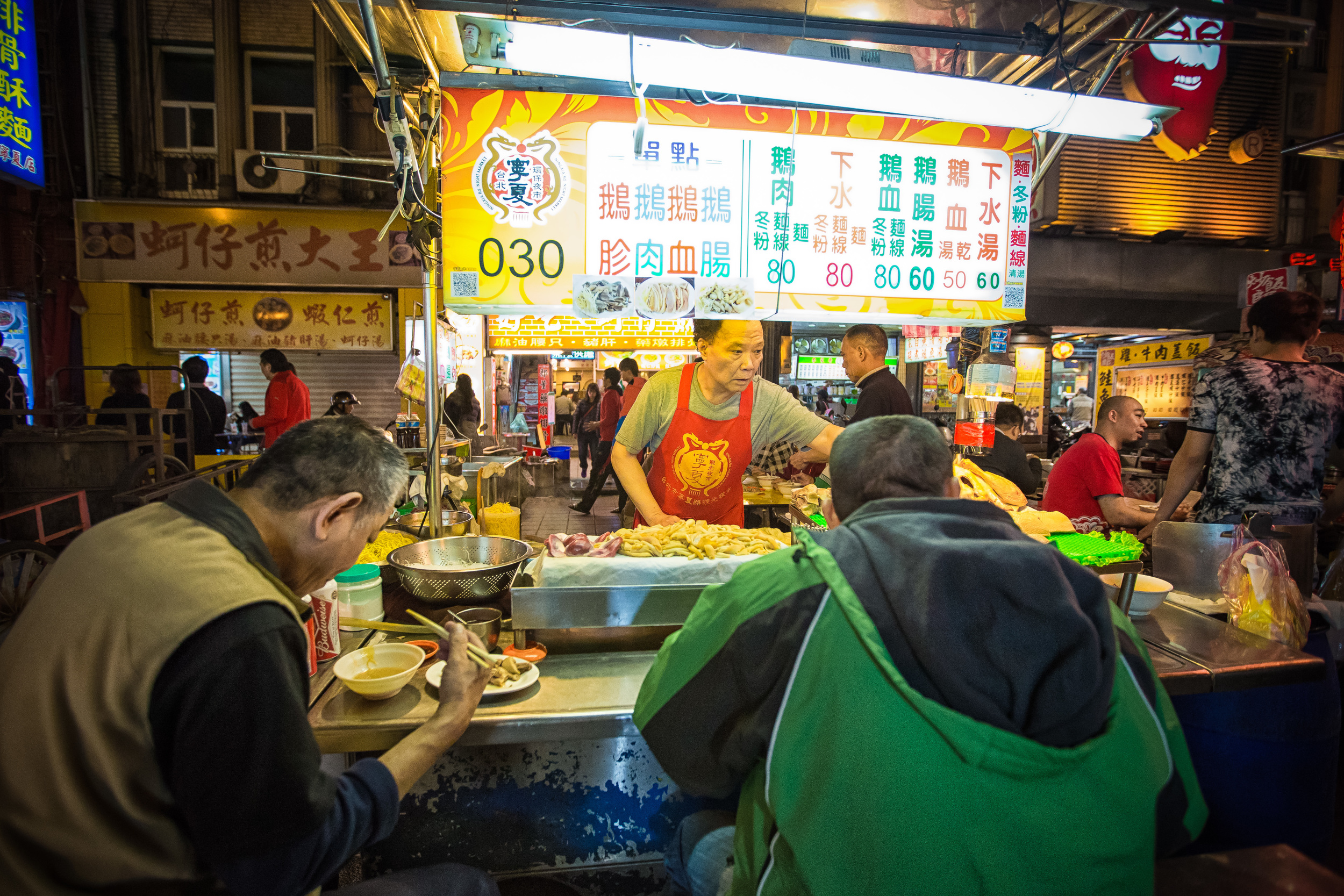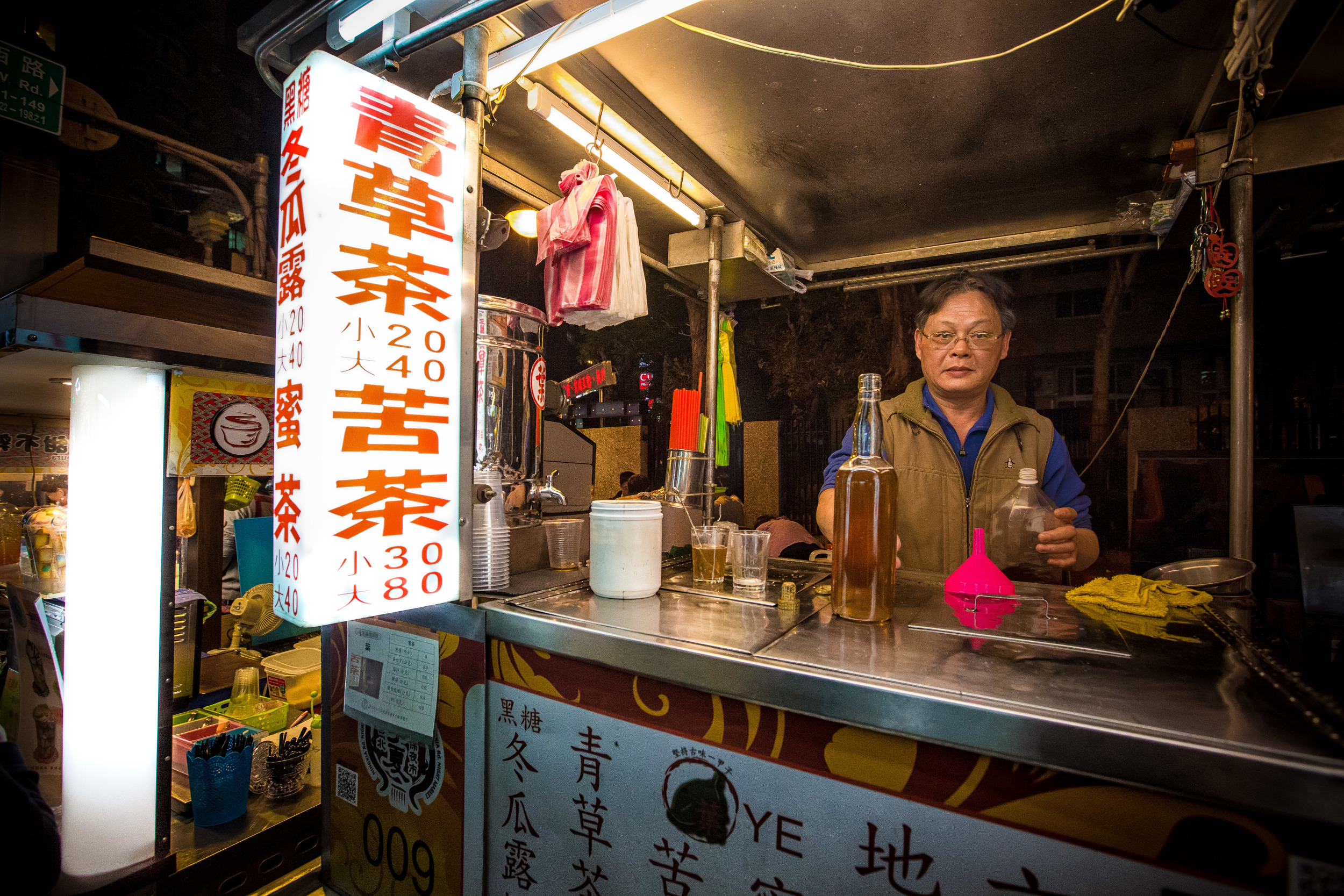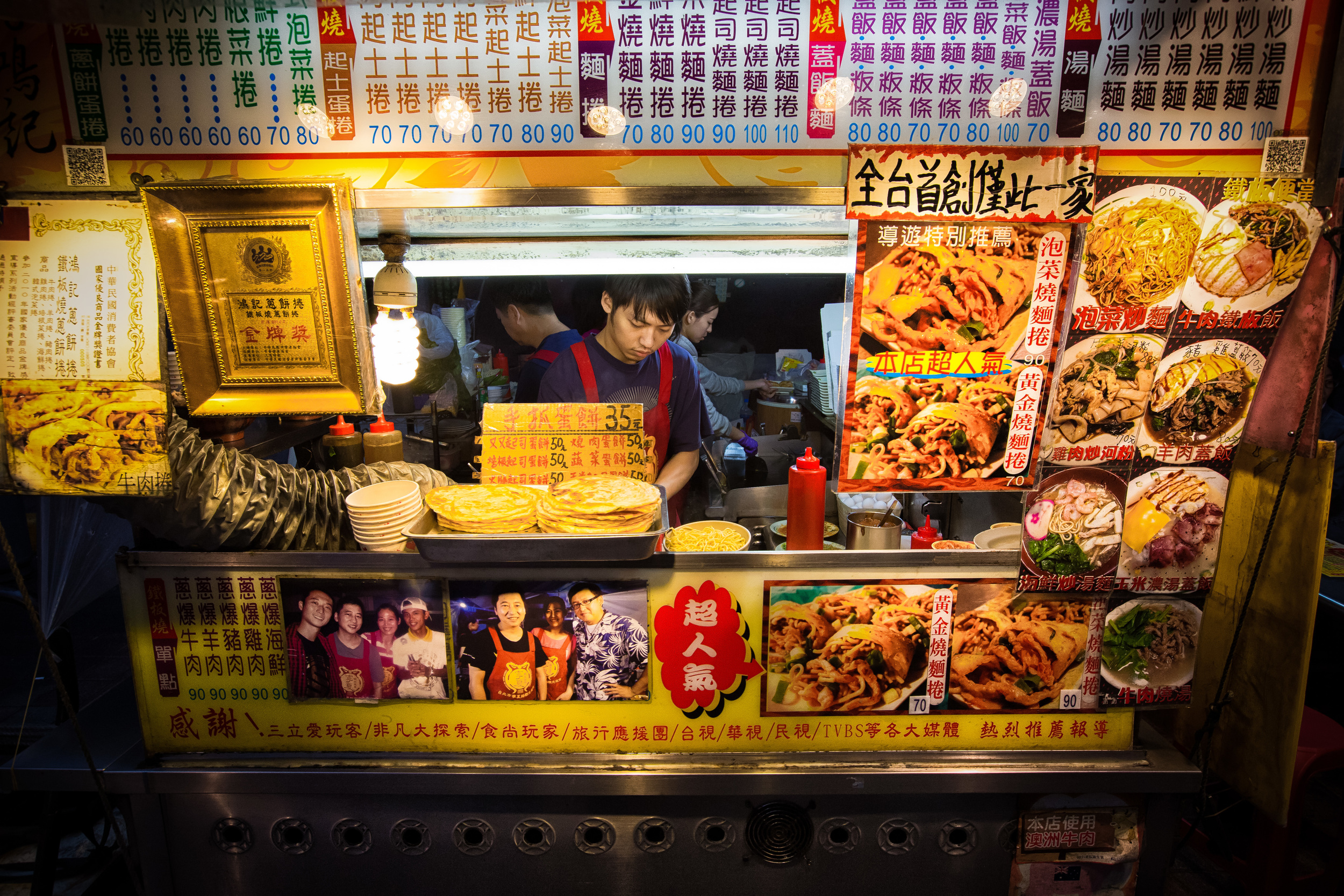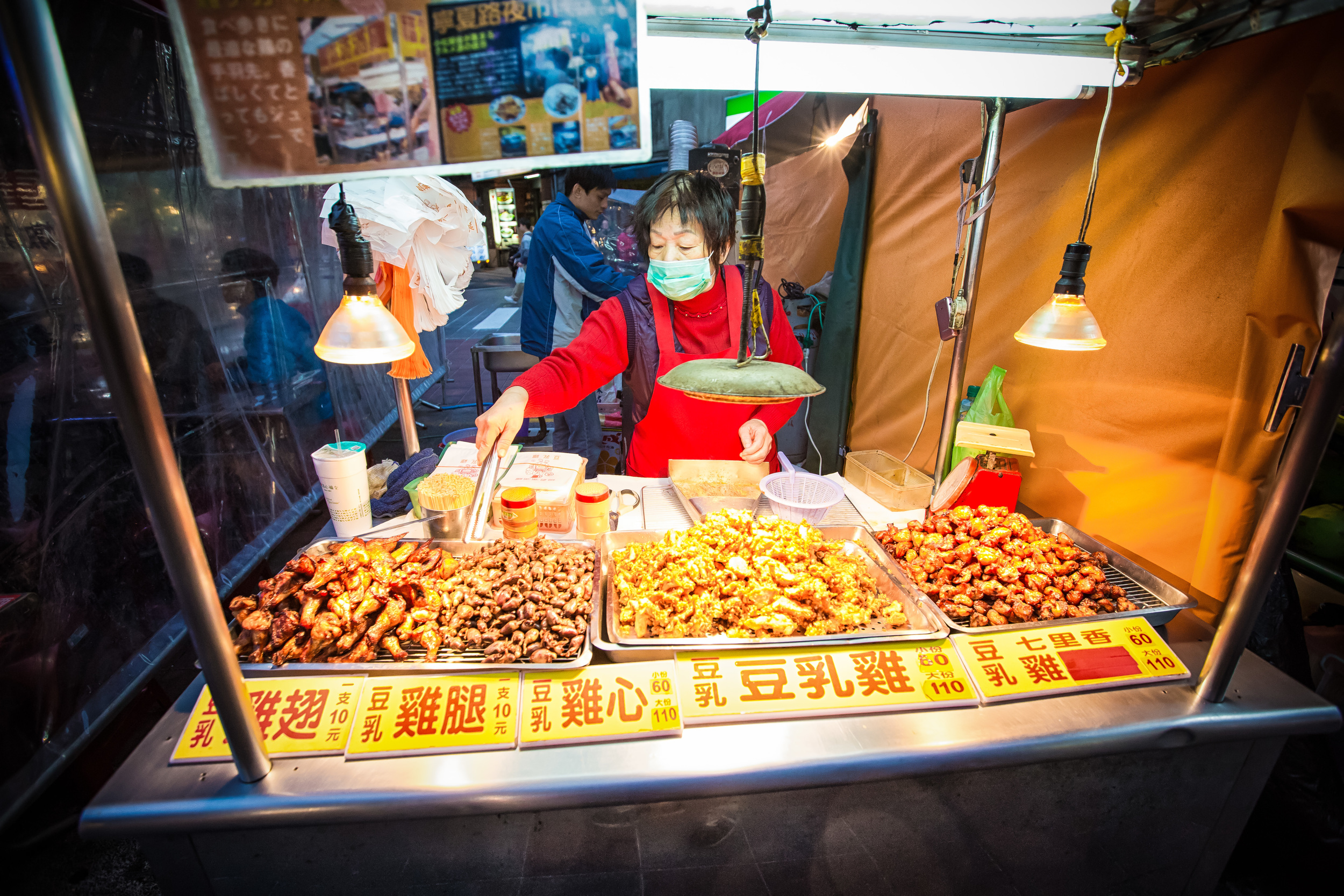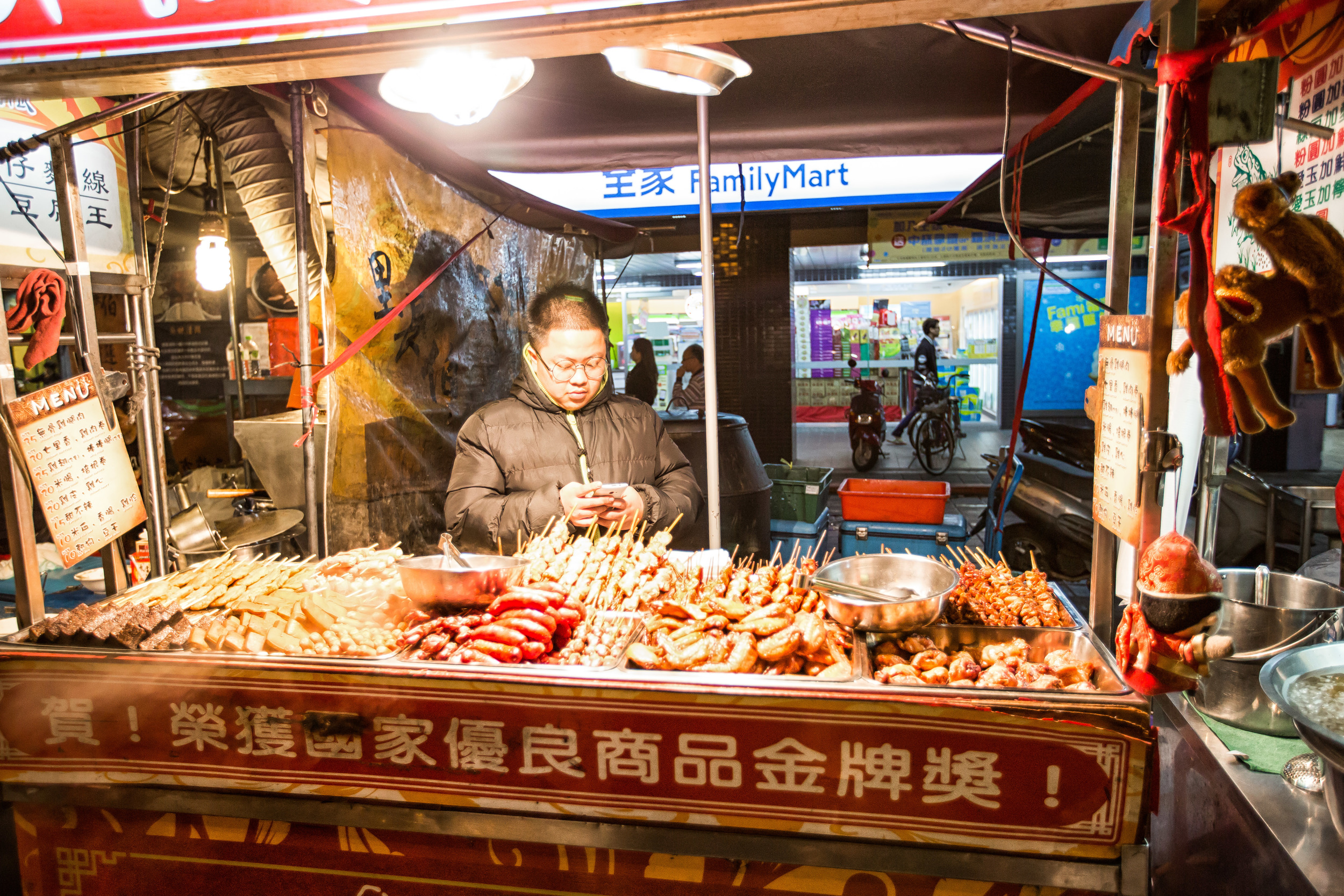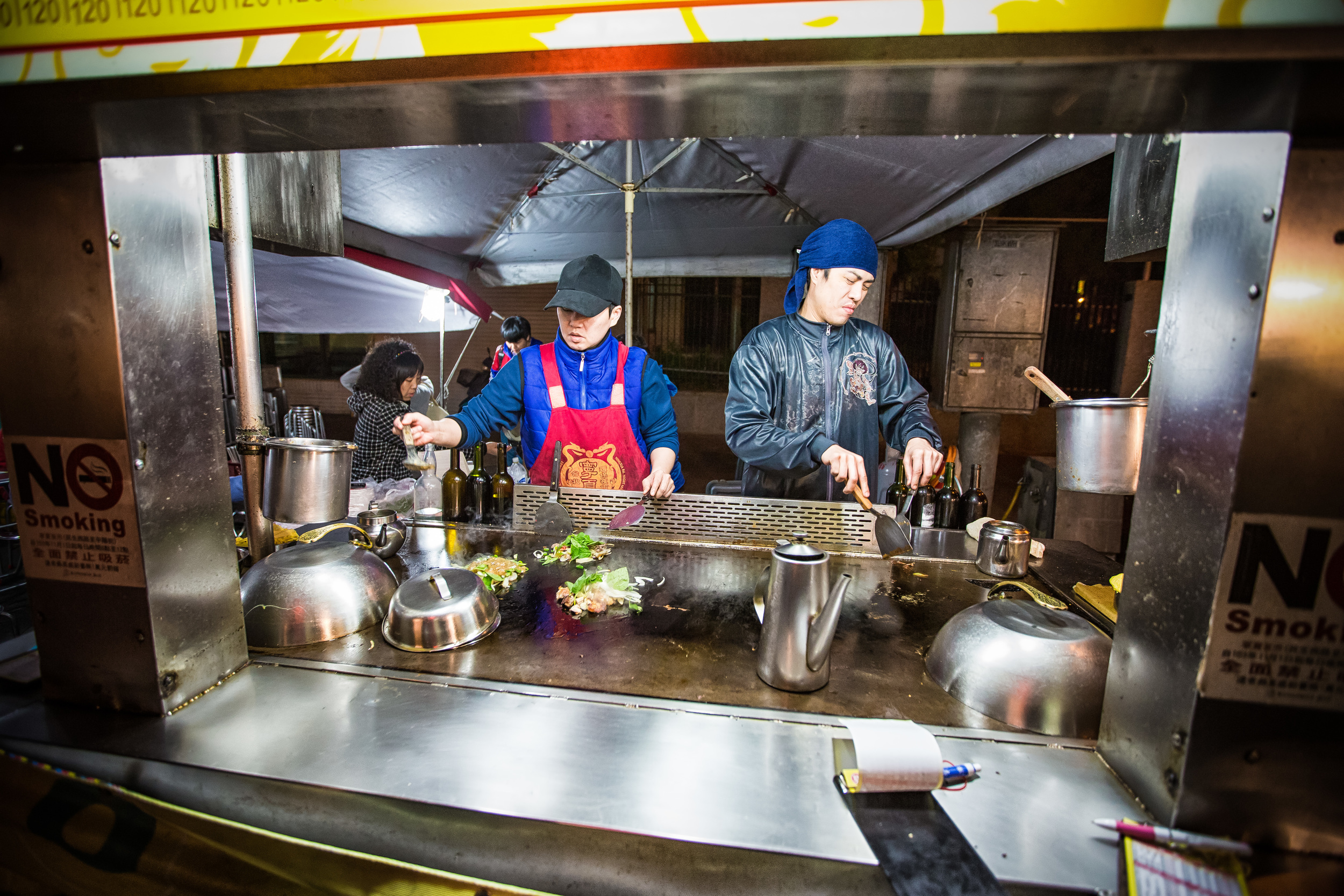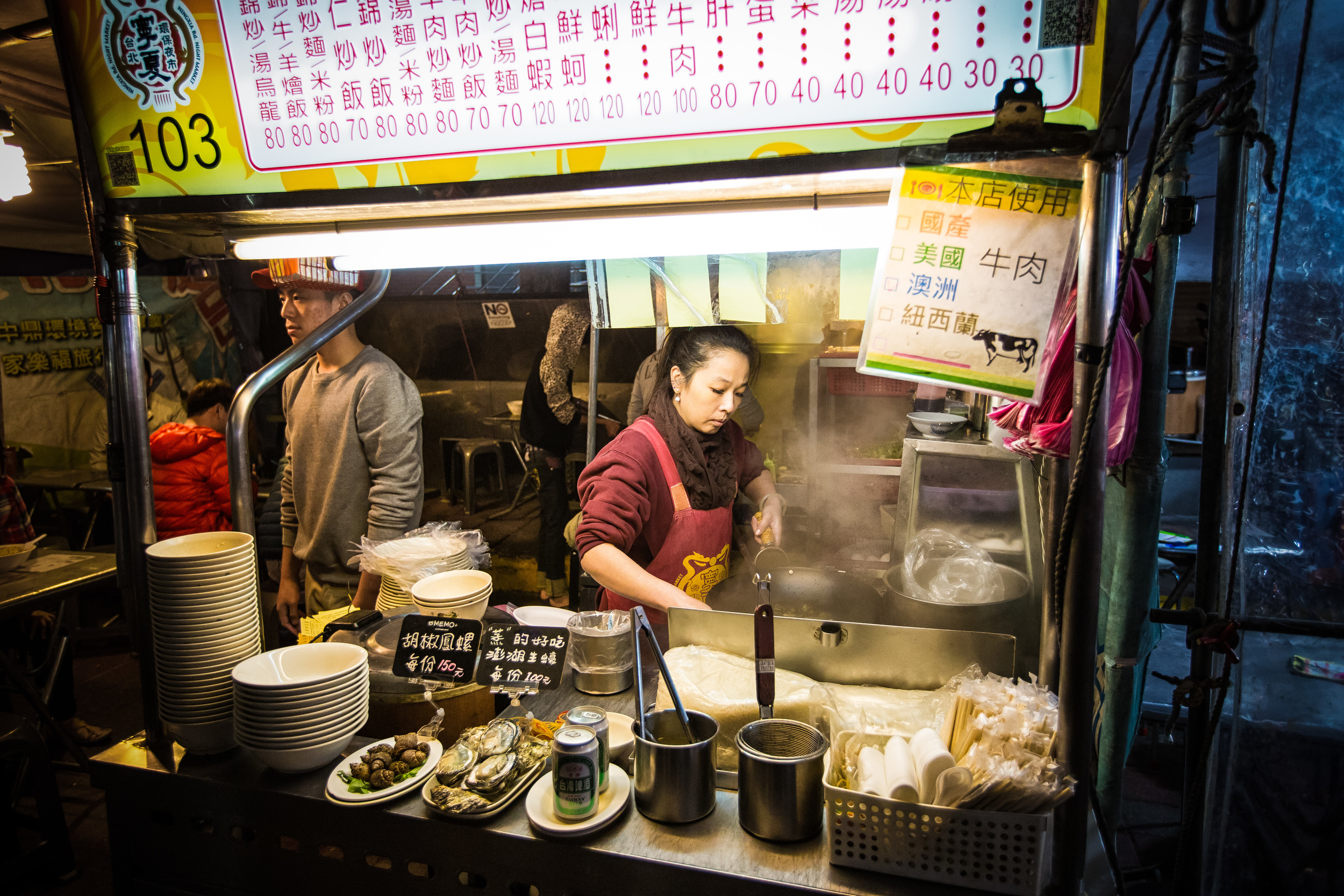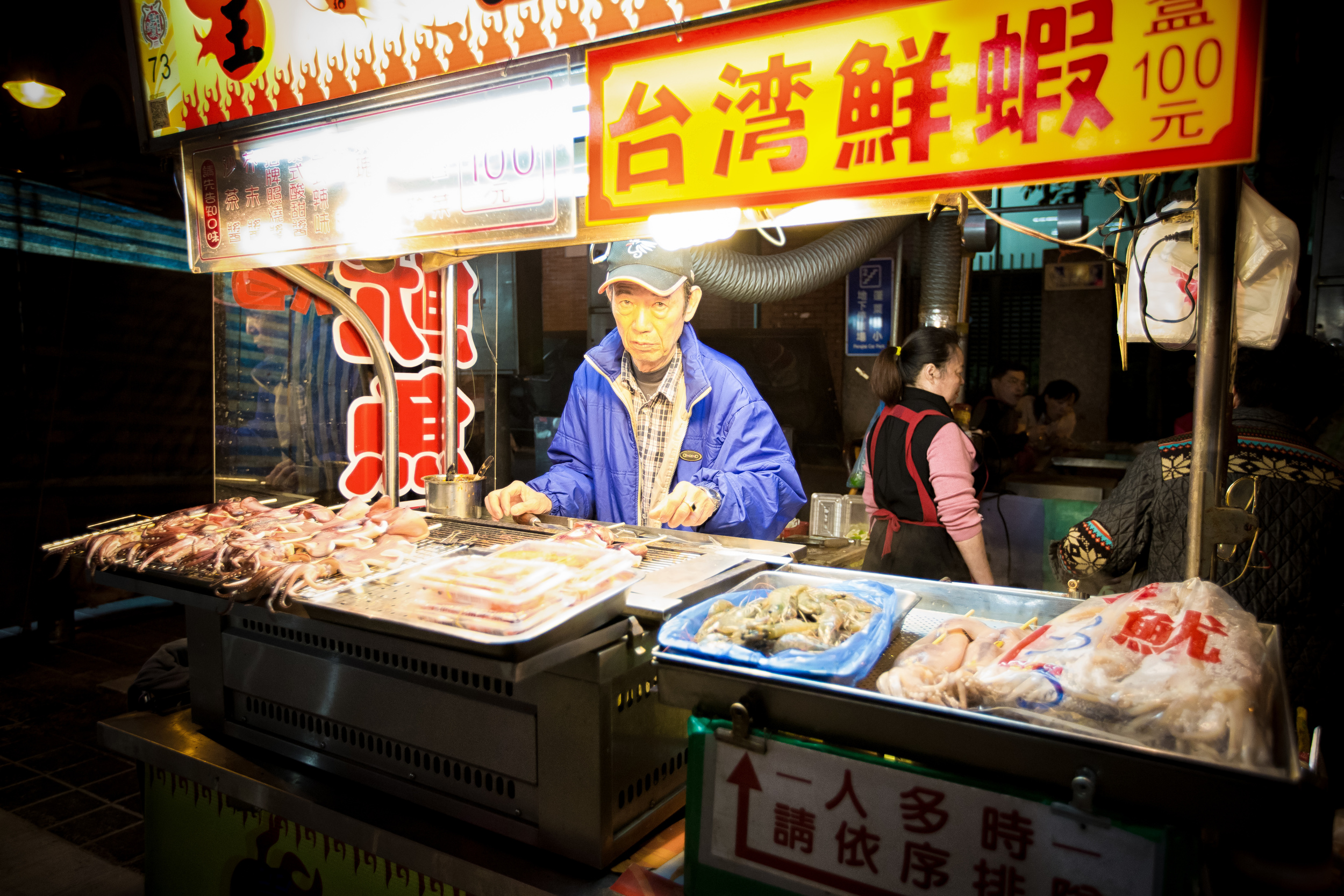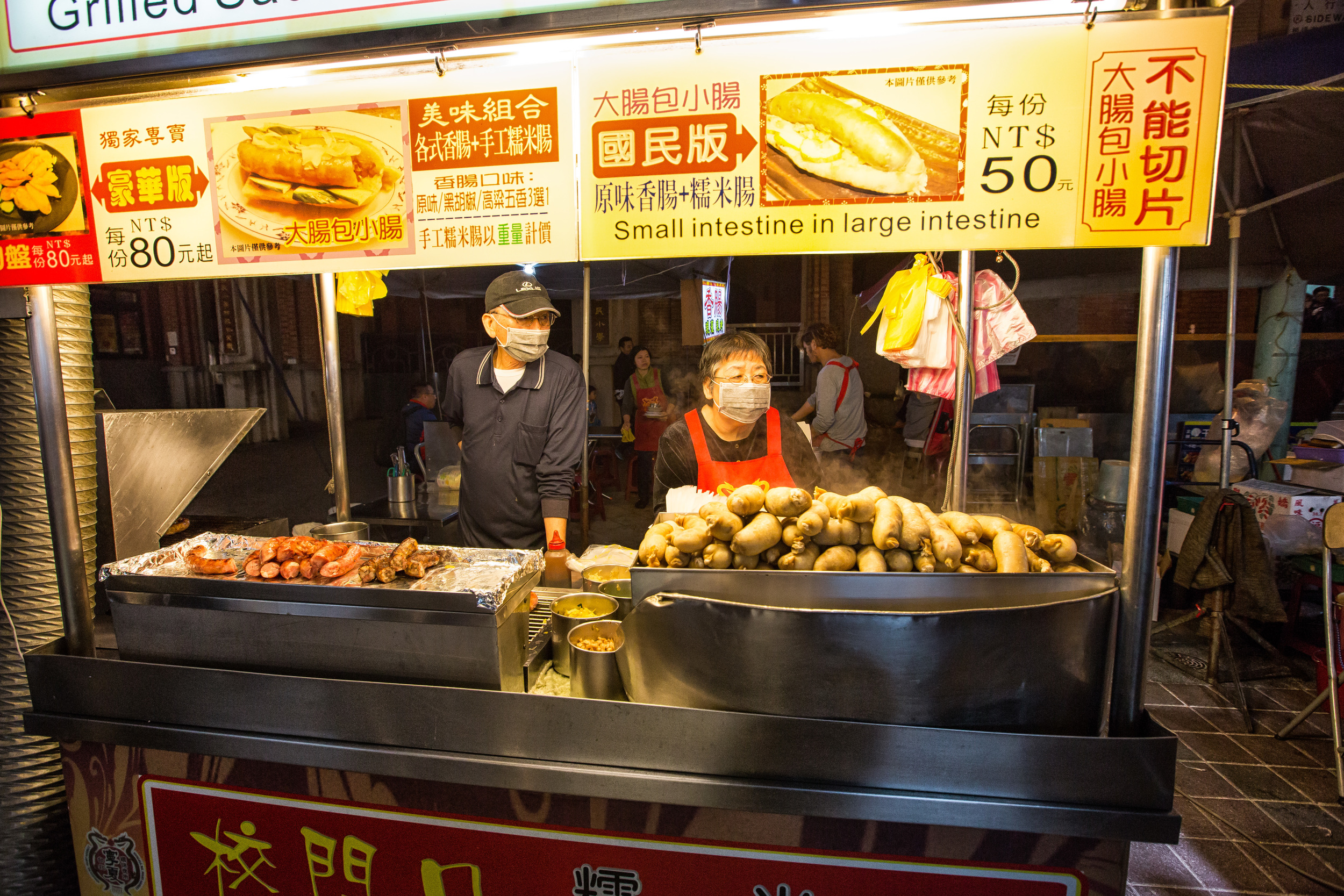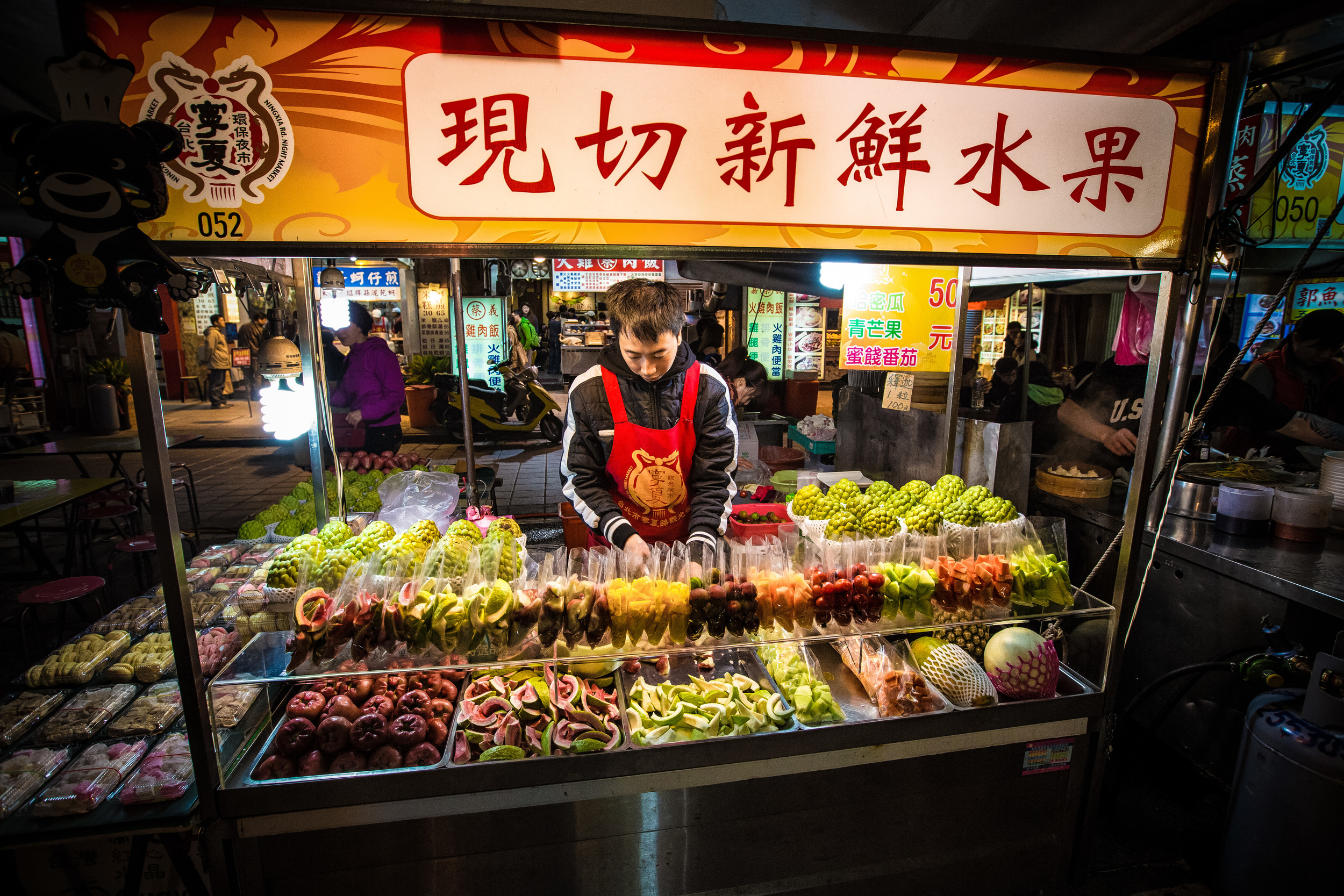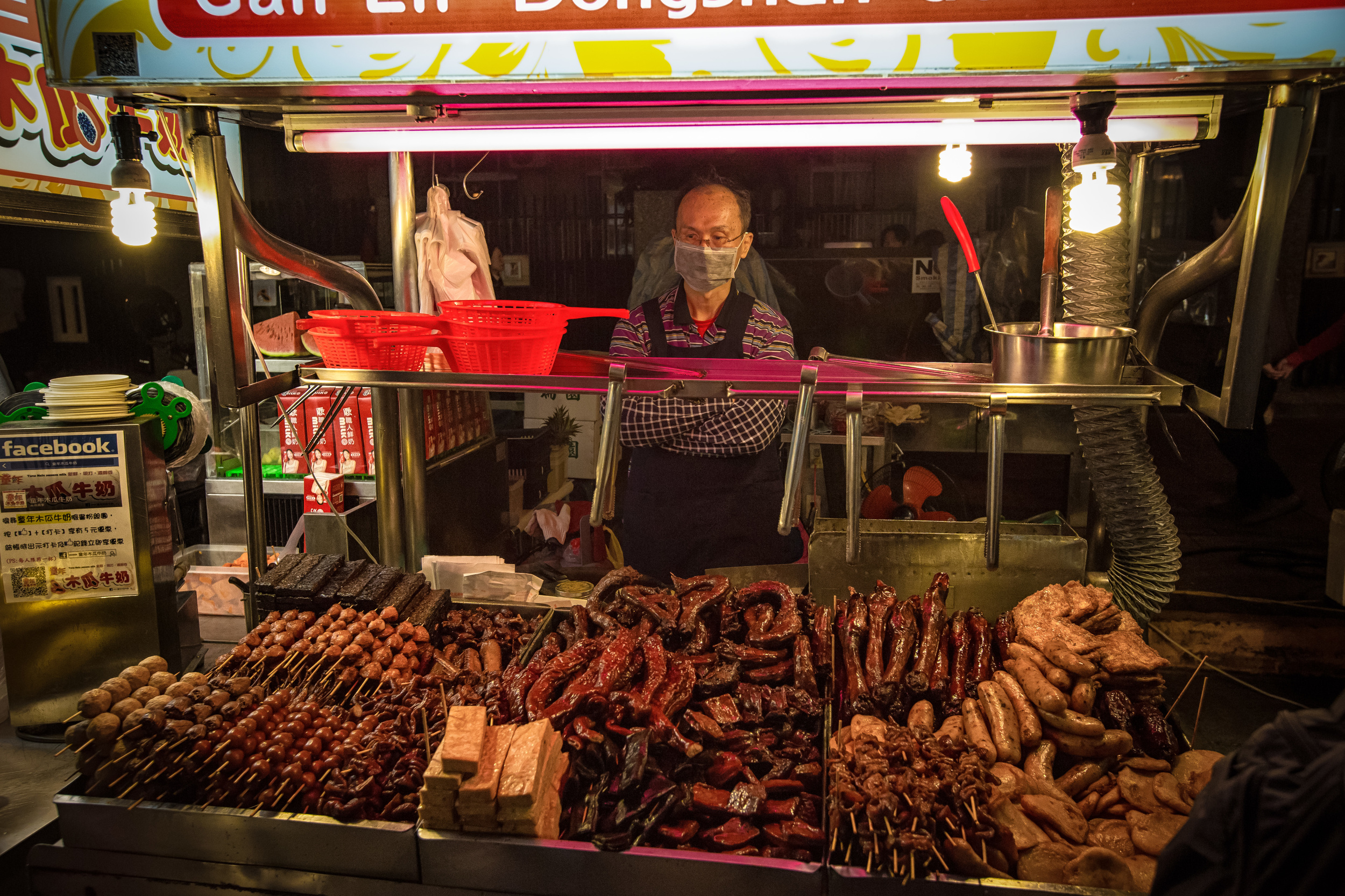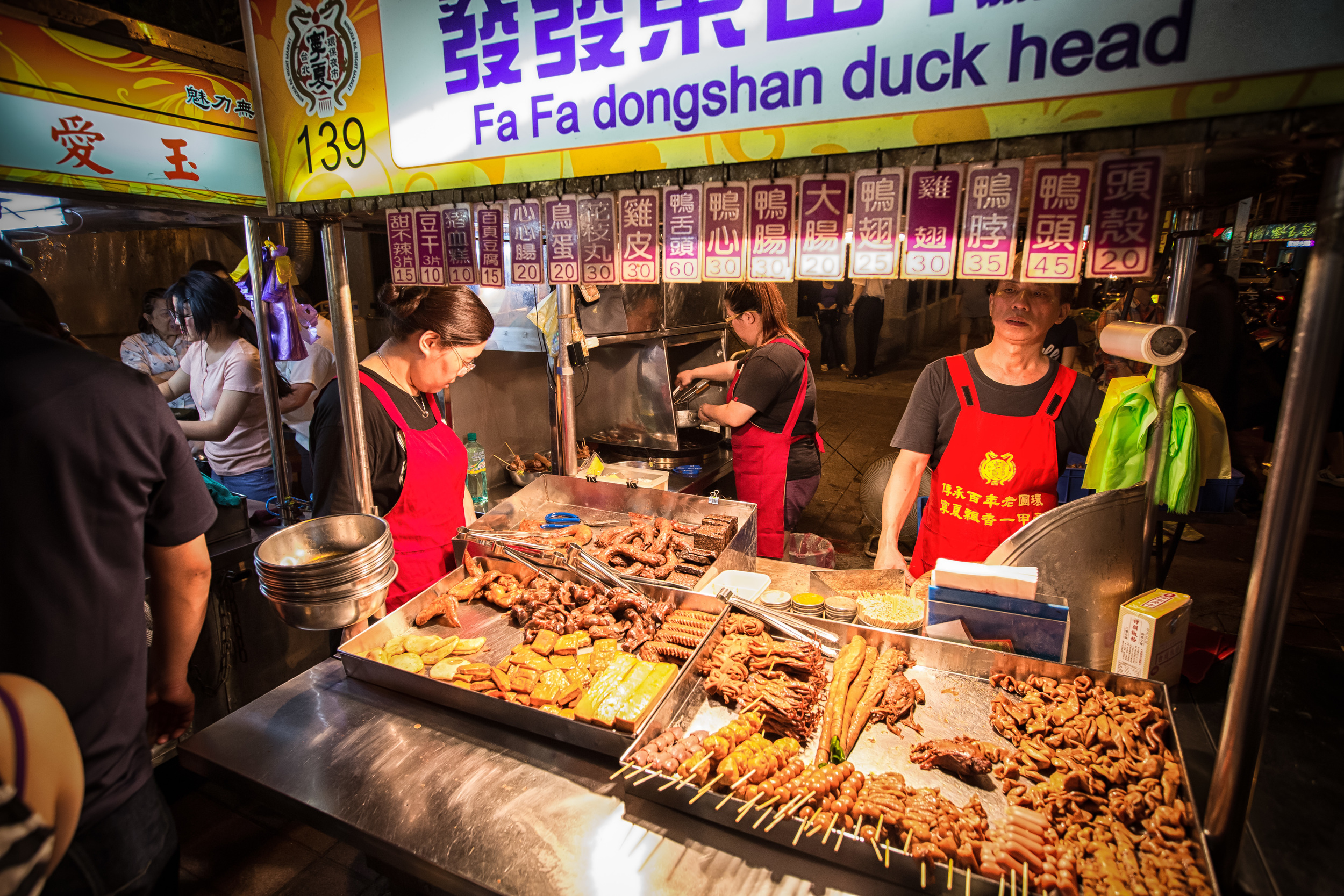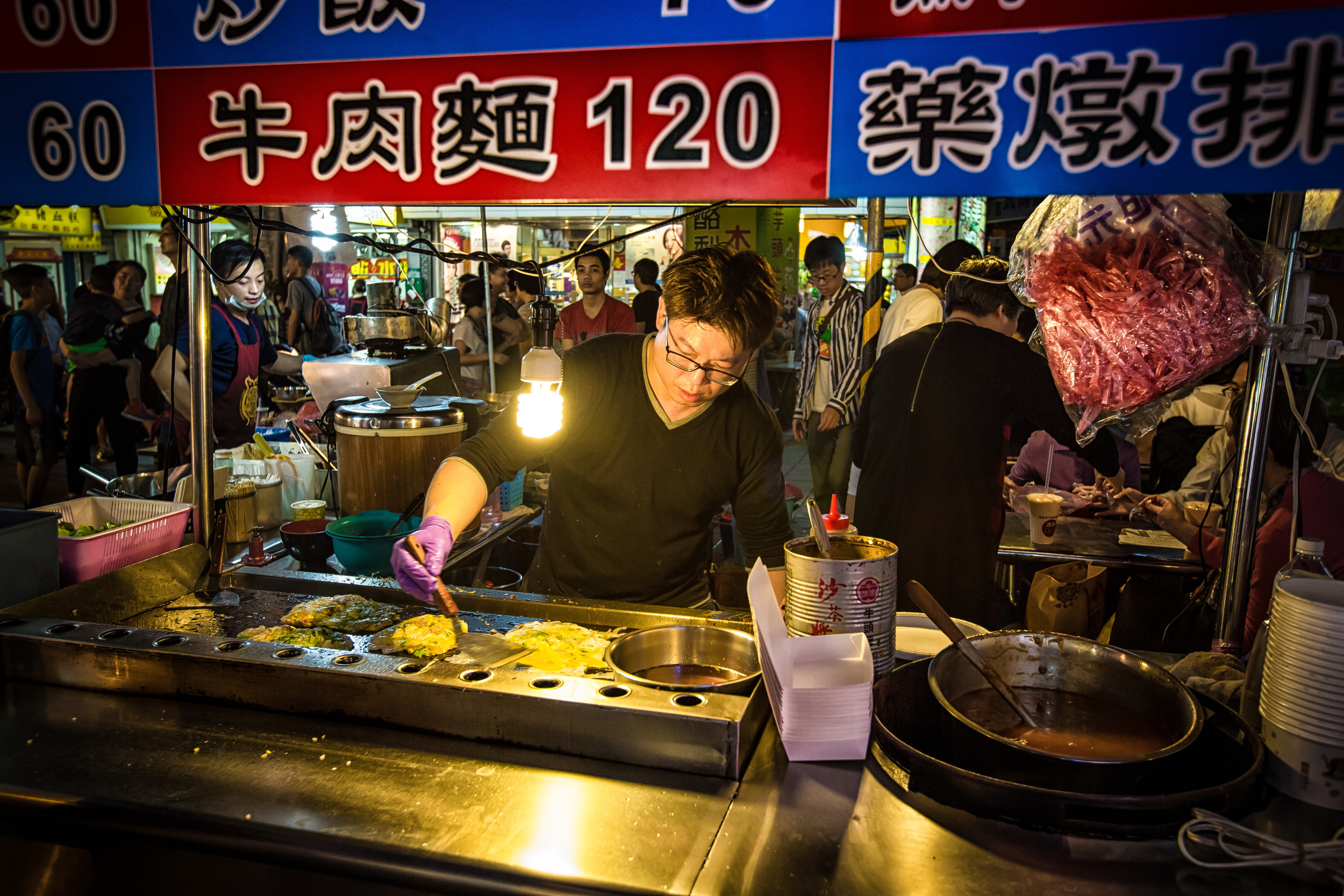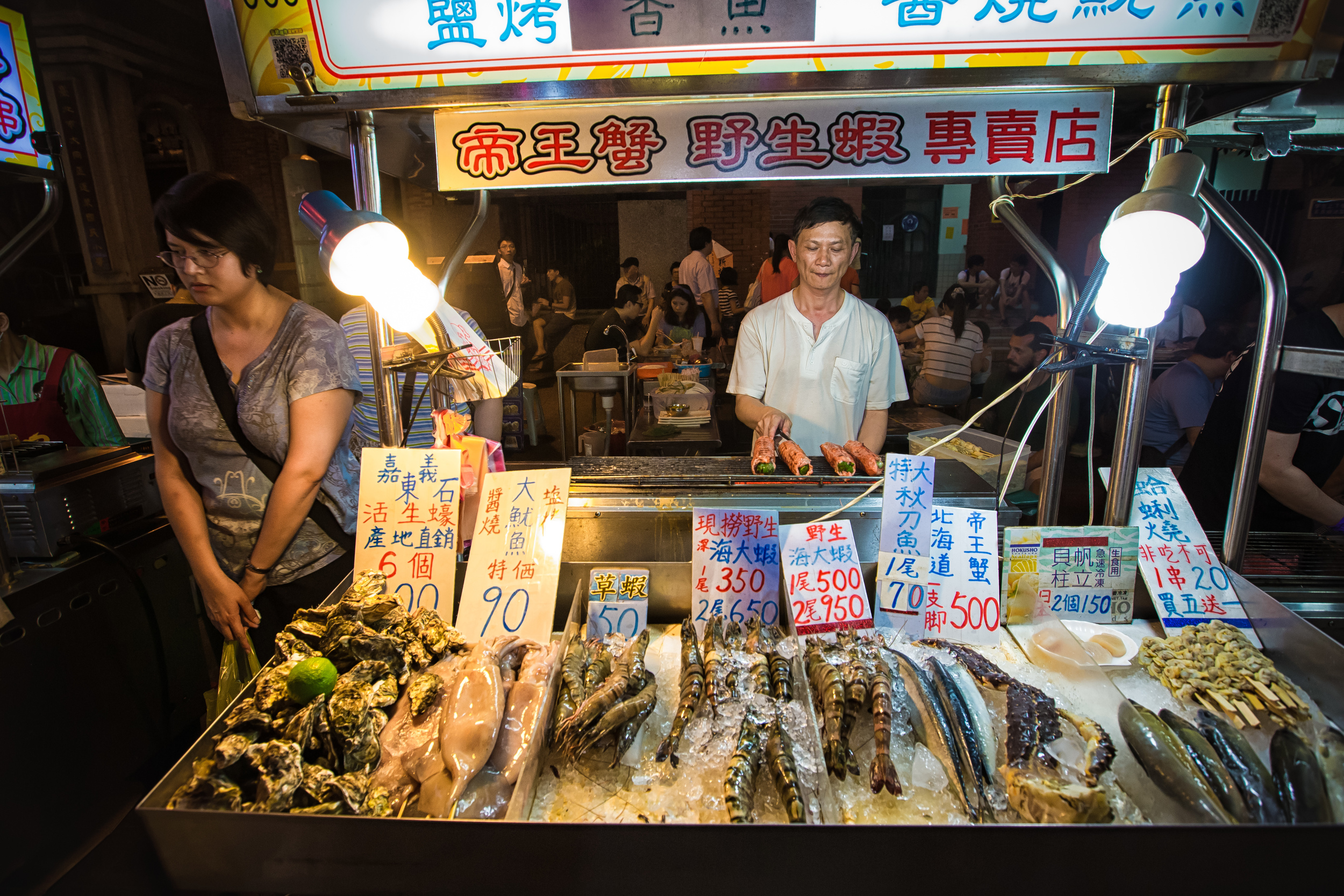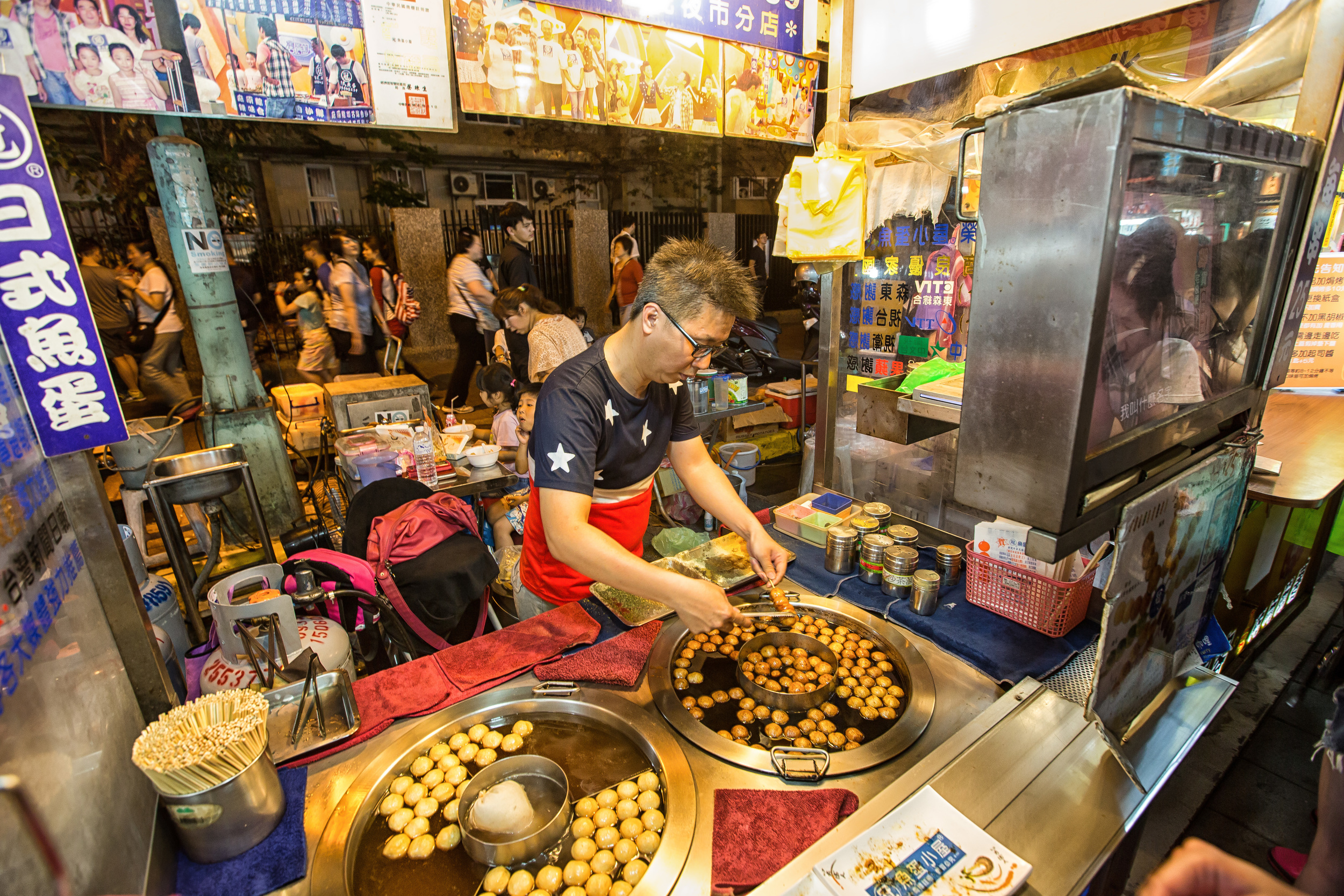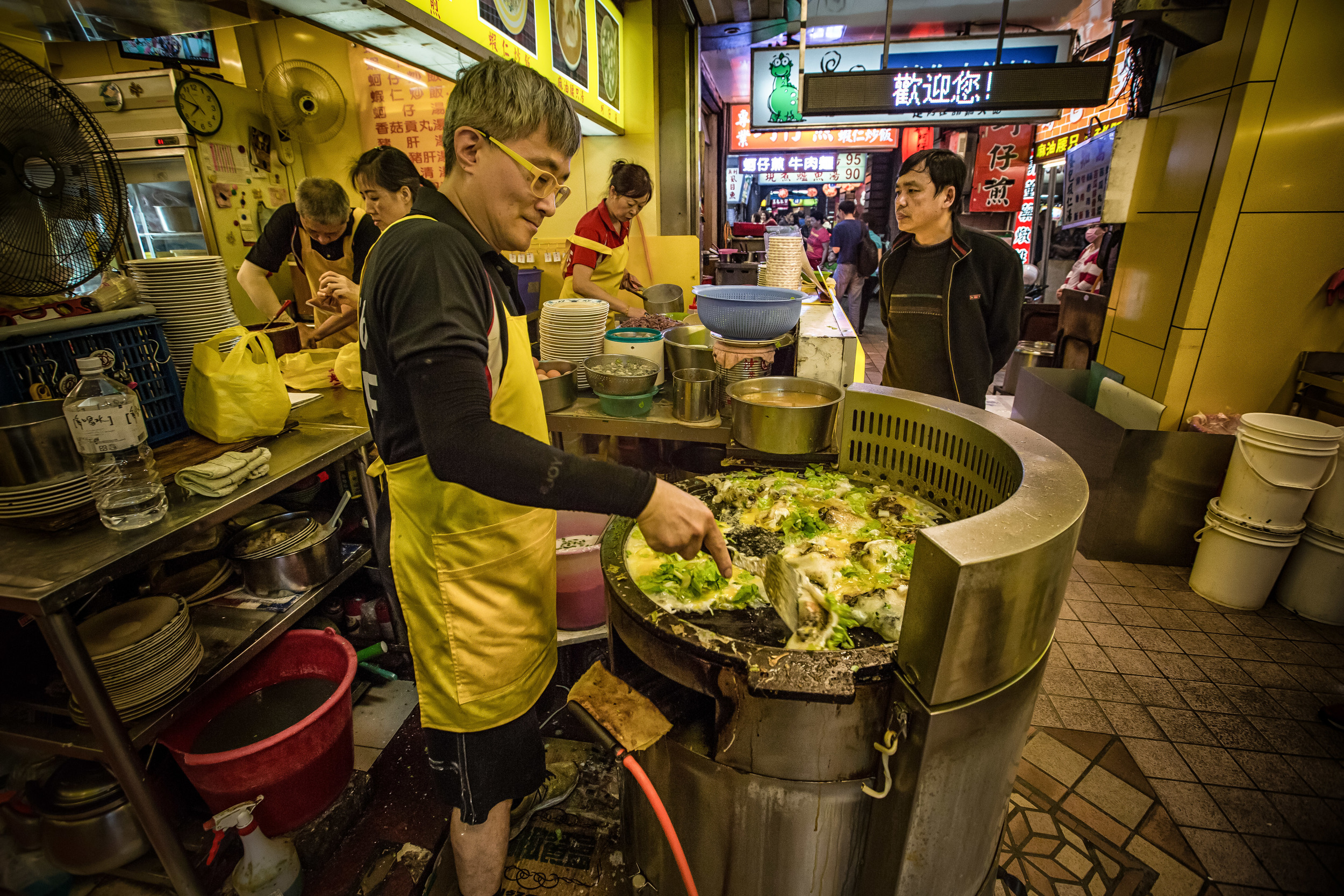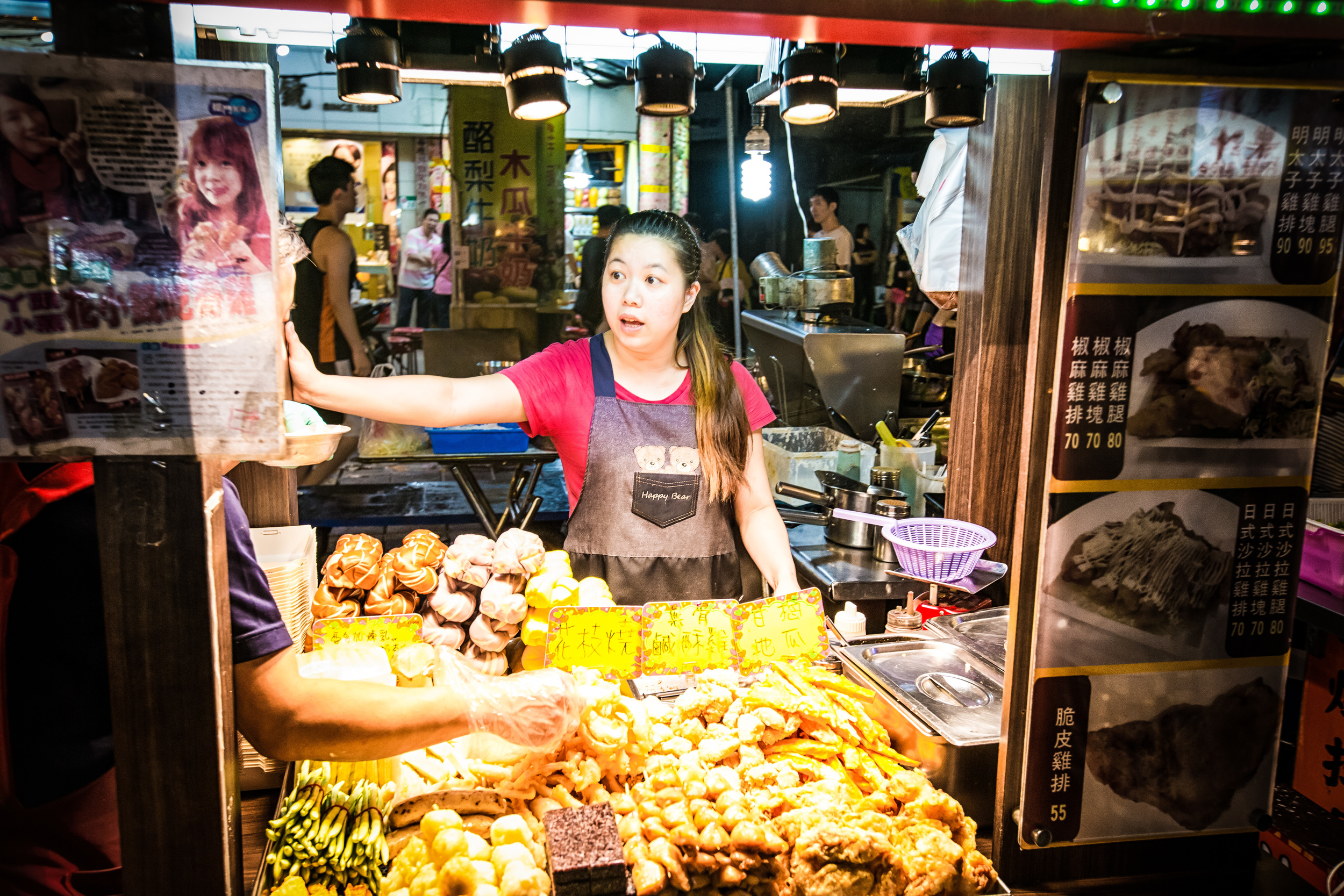This is my last post in my People of the Night series from Taipei's Ningxia Night Market (寧夏夜市)
The night market is situated in Taipei's lovely Dadaocheng (大稻埕) district which is one of the oldest areas in the city and offers a nostalgic feeling when you visit as most of the buildings in the area have been around for a long, long time.
The Ningxia Night Market is not a large night market, but it has some really great food and is probably most well-known for its Oyster Omelets (蚵仔煎) and other traditional Taiwanese dishes. The night market has been revitalized over the past few years and is really well organized and quality and sanitation are really important to all the vendors.
Admittedly, before starting this project, I had never been to this night market. Since then, I've made several visits over a period of a few weeks and quickly fell in love with this night market.
I have split up my shots from the night market into three posts. The first post will cover drinks and fruit and the two posts following it will be all about the food vendors.
1. Chicken Rolls (雞腿捲)
These Chicken Rolls are somewhat of a new thing at night markets around the country. It seems like they originated at Taichung's popular Fengjia University Nightmarket (逢甲夜市) and spread to night markets all over the country. Basically all it is is bits of chicken wrapped in chicken skin and then deep fried and grilled. When it's done, you can choose your flavour which includes curry, sour plum, wasabi, seaweed, lemon, spicy, cumin and pepper. Each roll is a little over a dollar and is a nice (unhealthy) snack.
2. Small Intestine in Large Intestine (大腸包小腸)
In the history of all terrible translations, this might be one of the worst. Don't get me wrong, I love me some intestines. (Duck intestines and pork intestines being my favourite) But imagine a random fresh off the boat westerner walking through the night market and seeing this English. I can safely assume that 99.9% would avoid this stall. That's unfortunate because this special Taiwanese night market food isn't to be missed.
If you're not sure what it is, basically it's a sausage hot dog with the "bun" being replaced with a rice sausage (米腸) The vendor will slice a hole down the middle and and then place the sausage (small intestine) inside with some cilantro, soy bean paste and chili sauce.
The unfavourable translation comes from sausage and rice sausage being "香腸" (xiang chang) and "米腸" (mi chang) respectively while intestines are "腸" (chang) The term for sausage likely got its name in Taiwan because when it is linked together they look like intestines, so the meat version loosely translates as "smells good intestine"
Anyway, this isn't a Mandarin lesson - in the shot you can see the vendors looking on because a popular TV show was filming at Ningxia that night and were making a lot of commotion at a neighbouring stall. The Rice Sausage is on the the right while the sausage is on the left.
If you come to Taiwan, don't be fooled by the English and try this sausage-dog!
3. Dongshan Ducks Head (東山鴨頭)
To tell the truth, these stalls have always somewhat scared me. I'm not actually sure why, because everything available I'd have no problem putting in my mouth. Maybe it's all the ducks heads staring at me, or maybe it's the dark color of all the food. I've yet to try this popular dish, but I will definitely eat it sometime. When you want to order you just take one of the red baskets and put what you want inside. When you're finished choosing you just hand it to the boss and he will fry it up for you and add some chili pepper if you want. The ducks heads and duck tongues are the most important ingredients to add to your mixture, but it can be a little expensive, so don't grab too much. There are two Dongshan Ducks Head vendors at Ningxia and they are both quite popular. I tried hard to get a shot of both of them, but one of them was so busy that it was almost impossible!
4. Teppanyaki (鐵板燒)
When I graduated from university my parents came to the city for the ceremony and wanted to go out for a nice meal afterwards to celebrate. I tried for a week or two to get reservations at the hip new Teppanyaki place on the Halifax waterfront to no avail. Teppanyaki for us is an expensive affair with chefs cooking up amazing dishes in front of you. When I arrived in Taiwan, one of the first meals I had was at a cheap Teppanyaki restaurant and the thing that amazed me was how cheap it was. Teppanyaki is popular here in Taiwan and is one of the leftovers from the Japanese colonial period. Despite it being "Japanese" food, the people here have put a Taiwan touch on it and made it their own. This stall sells a large variety of dishes and the two guys running it are quite busy. Every meal is under three dollars and includes the main serving of meat, some fried up veggies and rice!
5. The Goose Boss (鵝肉老闆)
This vendor specializes in the art of the goose. You can buy bowls of goose noodles, coagulated goose blood, goose intestines, goose gizzard and goose meat. The goose is typically cooked in salty hot water and when it comes out it is tender, salty and oily. I always thought it was a bit weird that they boiled chicken, duck and goose here as I'm used to those types of birds being broiled at home - after trying all of them though, I can safely say that they taste a lot better than what my mom cooks at home (sorry mom) and I would gladly eat it for Thanksgiving Dinner! Goose is a popular dish in Taoyuan, the county where I live, so I much prefer to eat it at home than in the night market in Taipei. This vendor however was quite busy each time I went to Ningxia, so I'm sure he's quite popular.
6. Fried Chicken (炸雞老闆)
My family was never really big on fried chicken while I was growing up as my mom preferred feeding us healthier foods. When I came to Taiwan fried chicken was like this "new thing" to me. The Taiwanese are masters at fried chicken and are always coming up with new ways of making it even more delicious which means I have to be careful to try to stay away from it and not eat too much. This vendor sells chicken wings, legs, hearts and bum all cooked in a special tofu milk batter. The tofu based batter makes the outside really thick, crispy and tasty. All you have to do is tell the vendor what kind of chicken you want and whether you want a large serving (大份) or a small serving (小份) I recommend a large serving of chicken bum! It's good for your skin (or so they say.)
7. BBQ Everything (烤很多有的沒的老闆)
For some reason, I find that when vendors are standing there using their cellphones, it is probably an indication of how good their business is. The night I took this shot, they weren't busy, but the next time I went, some hot girls were running the show and there was a line. This vendor BBQs everything in a giant cauldron and there is a wide variety of things to buy ranging from chicken wings and bums to fish balls and dried tofu. Since this stuff is pre-cooked all you do is add it into a bowl and they will calculate the price and season it for you. If you check the gallery below (or click on the Flickr link) you will see another shot of the same stall on a busier night when the girls were on the job.
That will do it for the Ningxia Night Market - I'm going to take a break for a few days and then I'll start posting from a Night Market here in Taoyuan called the Hsing-Ren Garden Night Market (興仁花園夜市.)
Hsing-Ren is a newly opened night market that is only open four days a week unlike most other night markets that are open every night. "Garden" Night Markets are the "new" thing here in Taiwan and are quite popular among younger crowds. A lot of the "new" food that has become popular over the past few years in Taiwan have been products of "garden" night markets like the Tainan Garden Night Market (台南花園夜市) or the Fu Da Garden Night Market (輔大花園夜市) as they attract younger crowds who are more willing to try new and more exotic foods.
I have a few more night markets planned over the next few months including Keelung's Miaokou (廟口夜市), Taipei's Shilin (士林夜市) and Chung-Yuan University Night Market (中原夜市)
Below is a slideshow of all the shots I used from the Ningxia Night Market Series and a few more that didn't make the cut. If you'd like to view larger versions, click on the flickr link to be brought offsite to my flickr album.

